Student of BA Photography at University of Westminster
Don't wanna be here? Send us removal request.
Photo


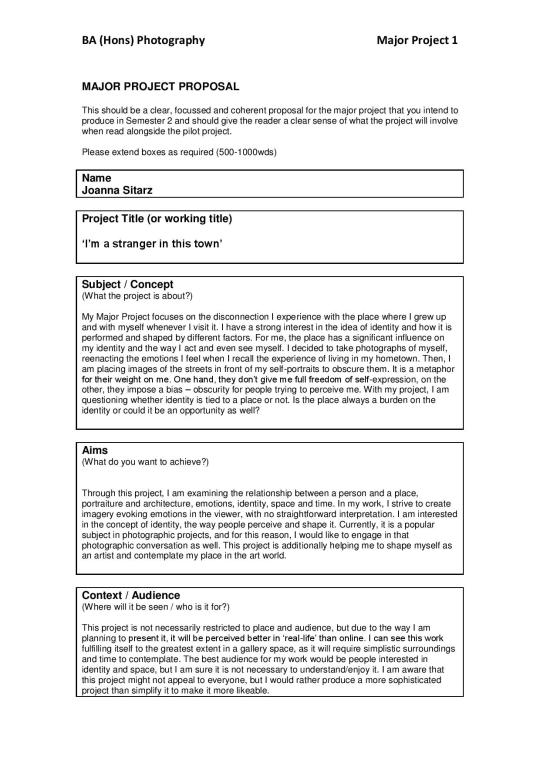
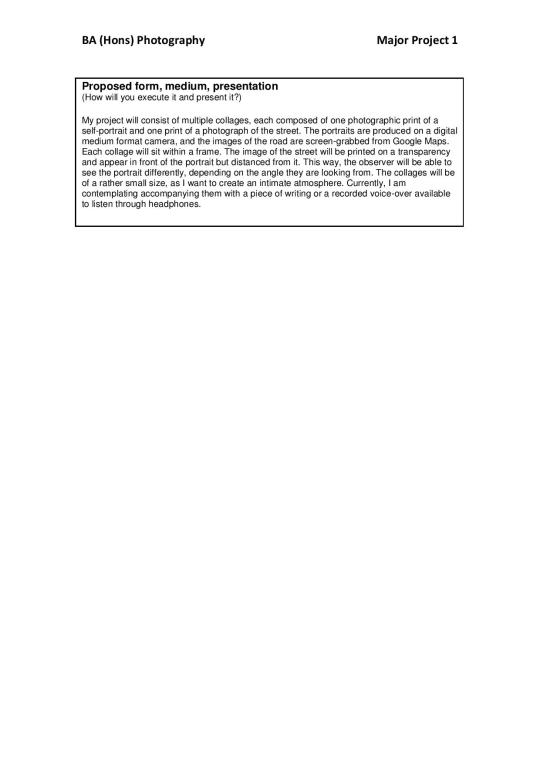
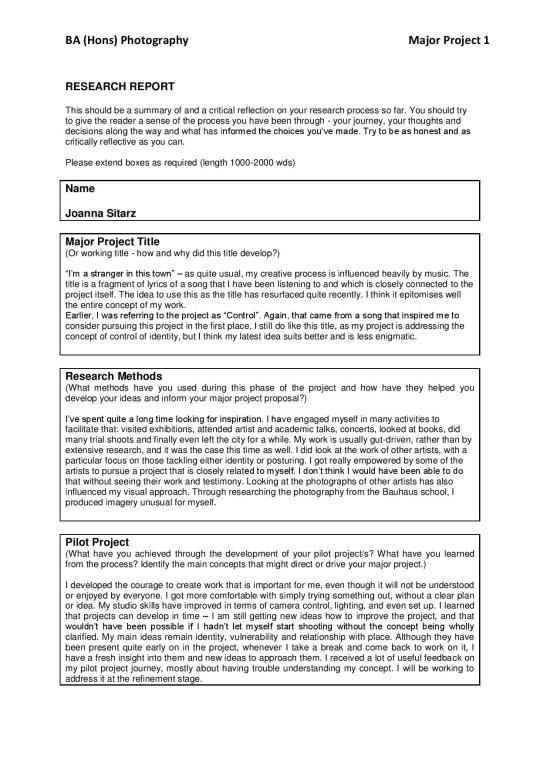
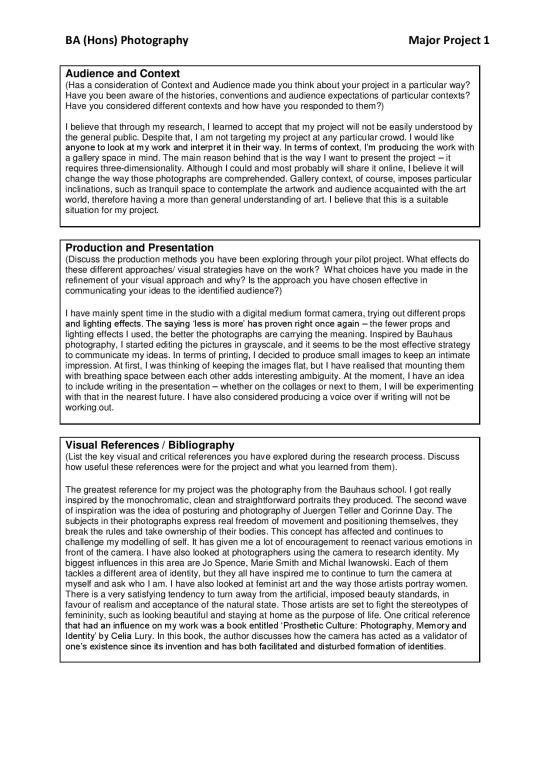
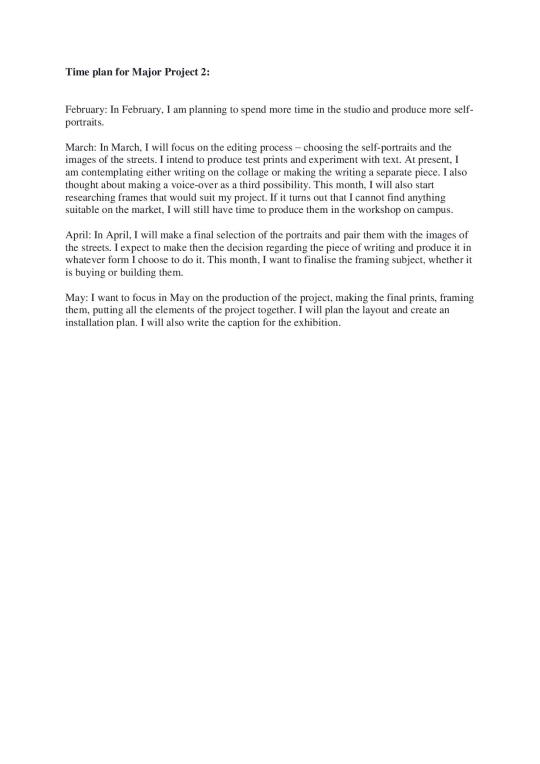
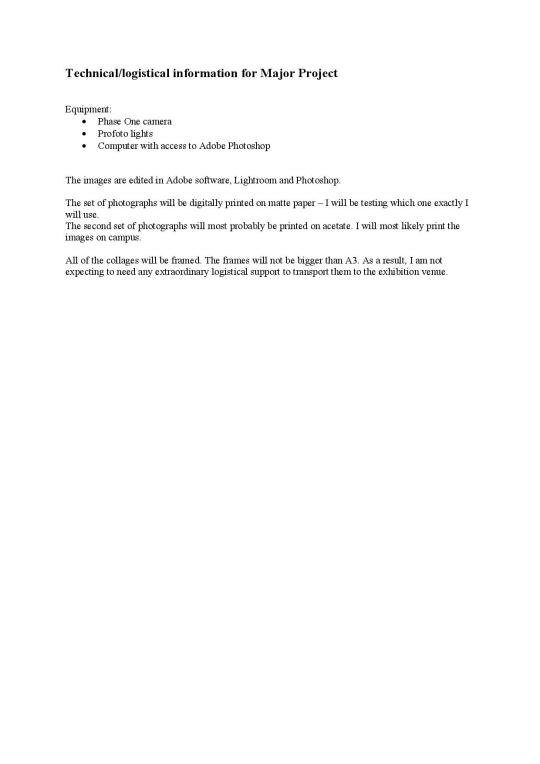
The written documents for the Major Project 1 submission
0 notes
Photo
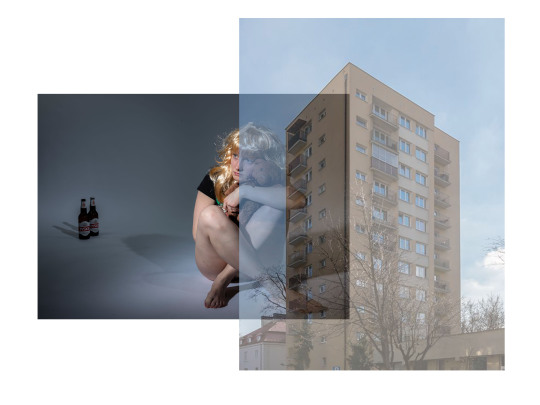
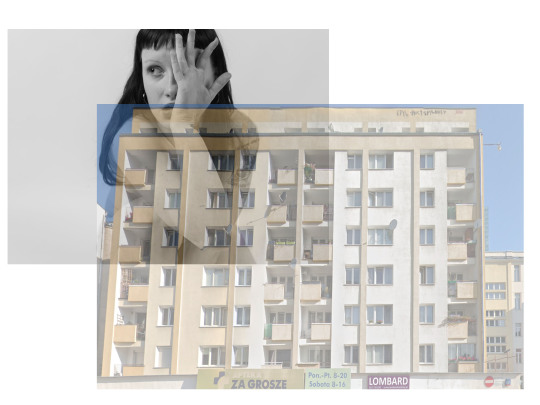
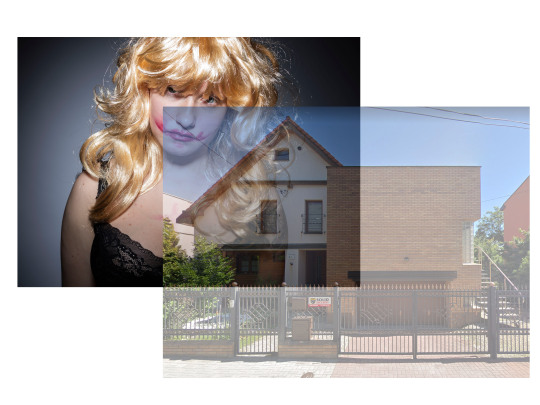
I have created some mock-ups of the intended presentation of my work. I want to juxtapose my self-portraits with images from the streets in my hometown. The street images will be printed on a transparency, and I will position them in front of the portraits, with some distance between both prints. This way of presentation is suggesting that the city is obscuring my identity. The same way as the viewer is looking through the streets to see the image of me, very often, I am perceived by others through where I am from.
0 notes
Photo
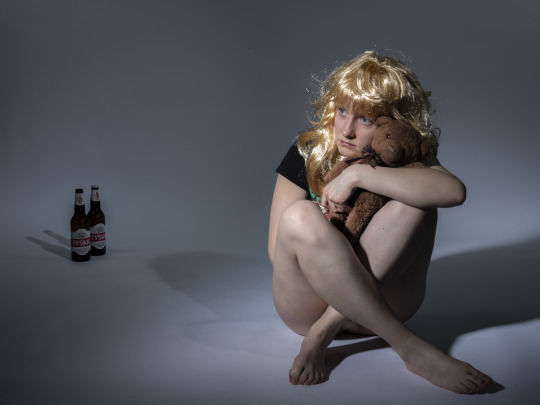
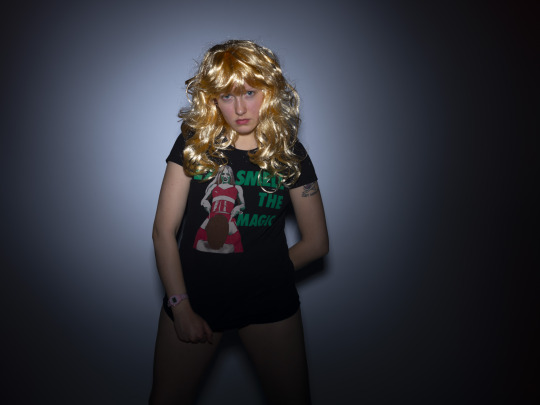
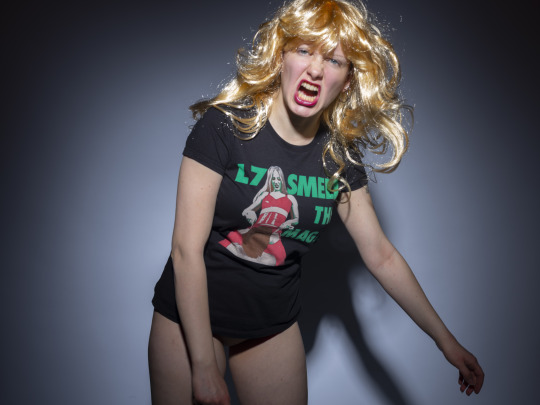
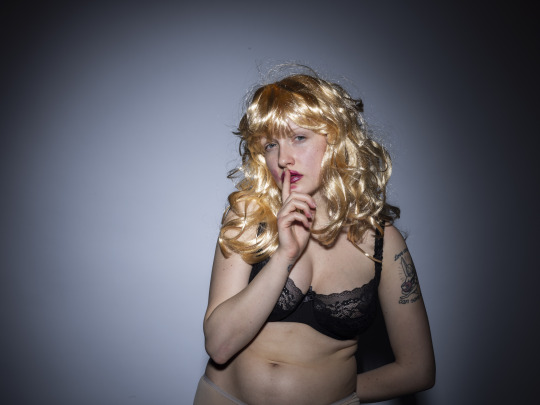
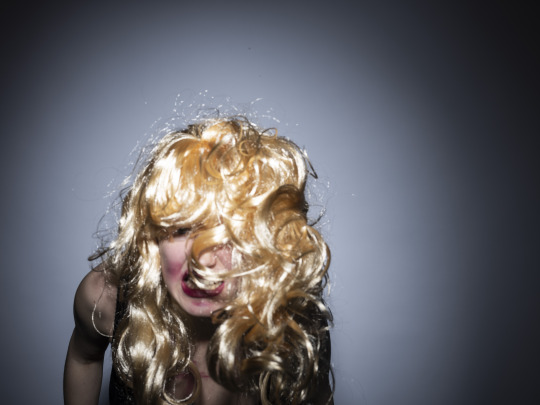
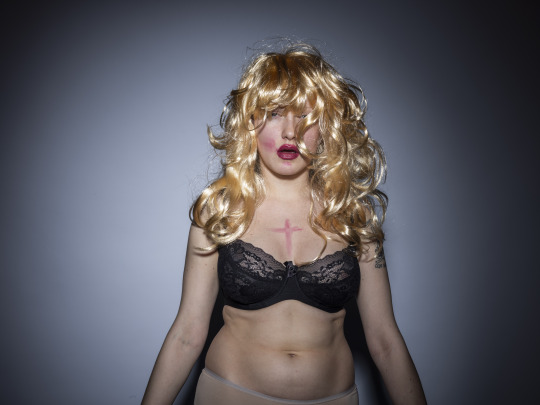
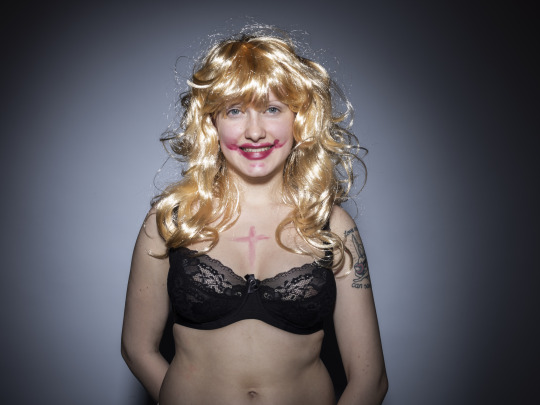
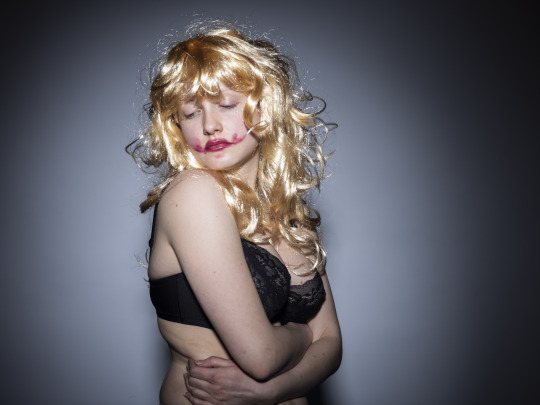
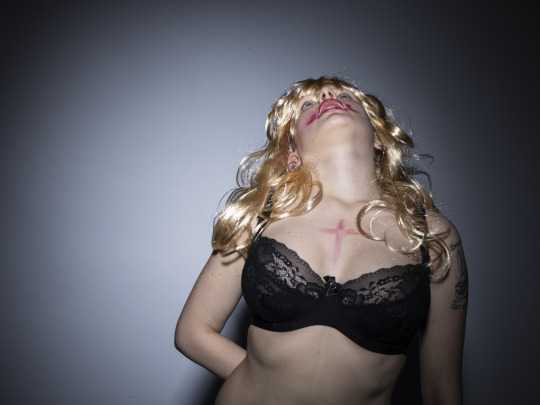
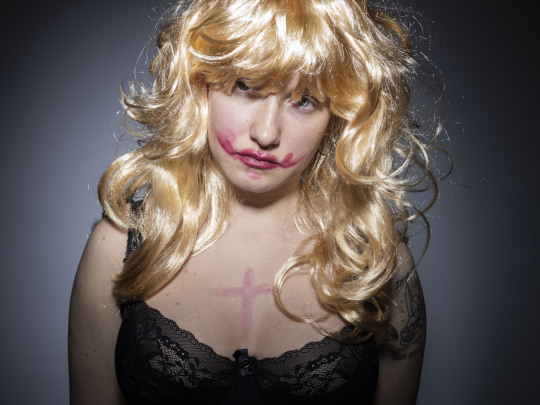
Second shoot for the Major Project
For my second shoot, I decided to take some props and create environments around myself. I have used a blonde wig, as it is exactly the same colour as my natural hair. The first image represents my childhood memories. I shot more images with props, but I did not like them at all. The second half of the shoot, I went for the same strategy as previously, and it worked much better. Lipstick is a symbol of femininity, but a smeared lipstick springs to mind punks and rebels, something unwanted. I used it to also create a reference to the Joker - someone unhappy deep inside, put putting a happy face on. I have also drawn a cross on my torso, which with no surprises symbolises religion. Religion I was brought up with, leaving a permanent impact on my identity. For this shoot, I have used different lighting - it is more visible in the photographs and resembles a spotlight. Spotlight is often associated with putting something into focus, so I believe that visual reference was accurate. These images do not seem to fit into the monochromatic style I had used earlier. I like them, but they are visually very different from the previous shoot. I think I am making good progress in self-portraiture generally. I have better control of the camera than the last time, and I am feeling more open with my expression.
0 notes
Text
Michał Iwanowski - ‘Go home Polish’
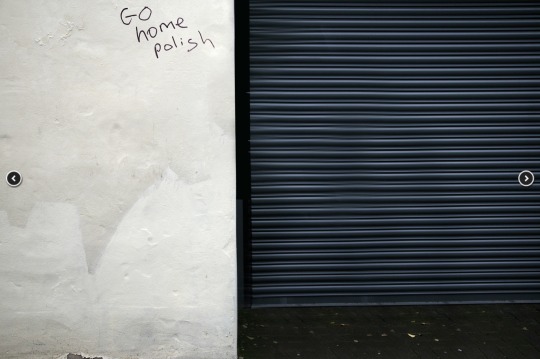
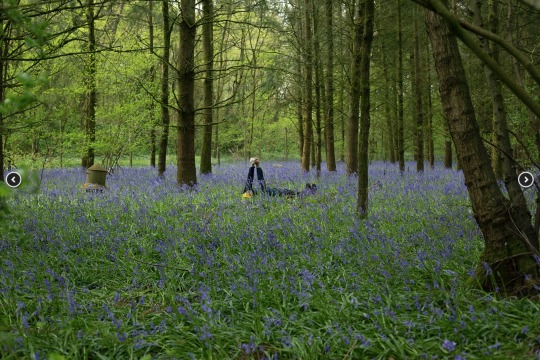
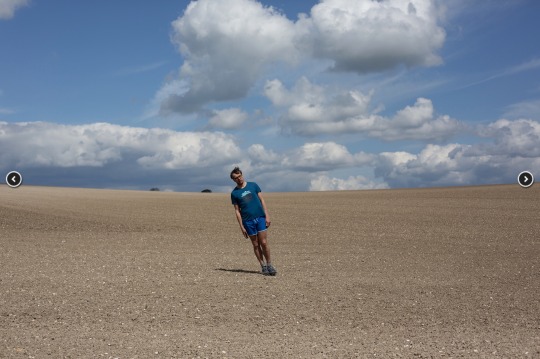
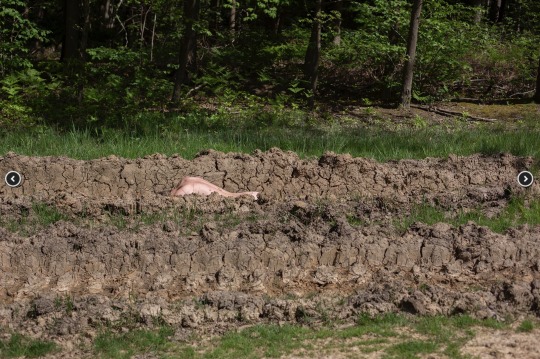
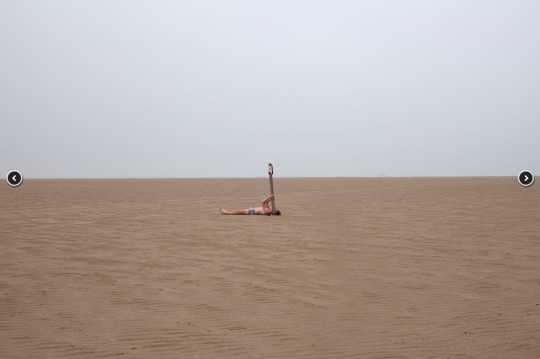
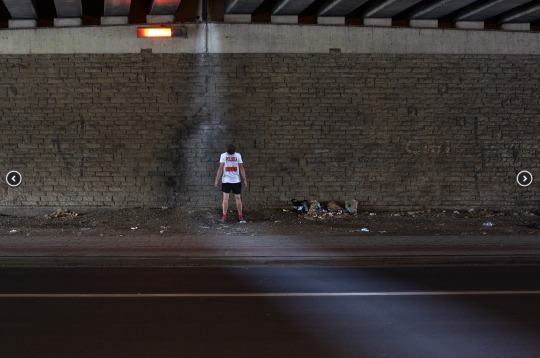
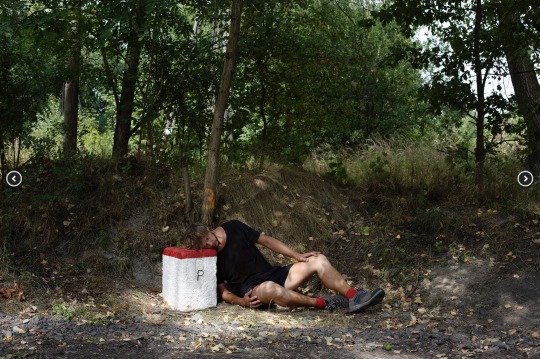
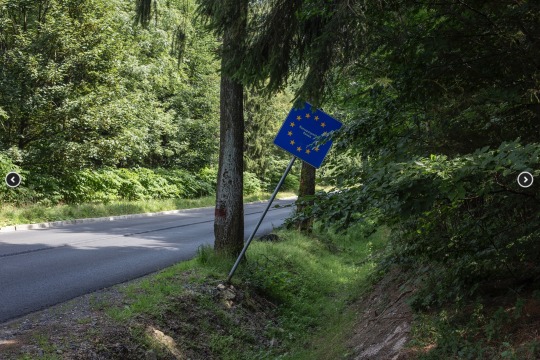
I am currently analysing this body of work for my dissertation, but it has been inspiring for my major project as well. I relate to this project very closely, as the author is examining his identity in relation to his chosen home country - Britain and the country he was born into - Poland. The photographer saw a graffiti stating ‘Go home Polish’ in his neighbourhood in Cardiff back in 2008. Right after the Brexit referendum in 2016, he remembered about it and began to dwell on what home actually is. Iwanowski went on foot from Cardiff to the city where he comes from in Poland, which is absolutely incredible for me. On his way, he created self-portraits in the places he visited. Interestingly, he spoke to/interviewed people on his way, but did not photograph them. We can only learn about that from the written text that is part of the project. The project exists both as a moving image and a series of still photographs. Each of the forms of presentation gives it a different perspective, which I find very inspiring. Iwanowski questions the connection between people and place with a fair amount of posturing, which encompasses all the ideas I am fascinated by as well.
0 notes
Photo
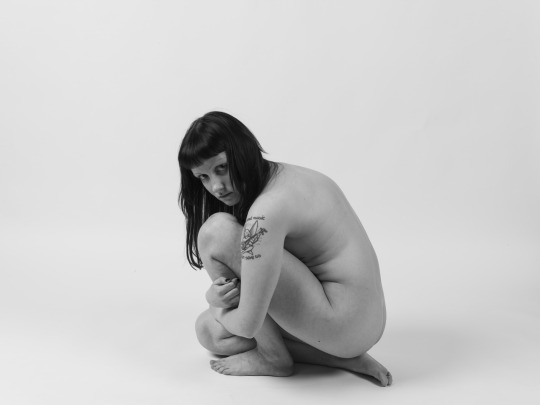
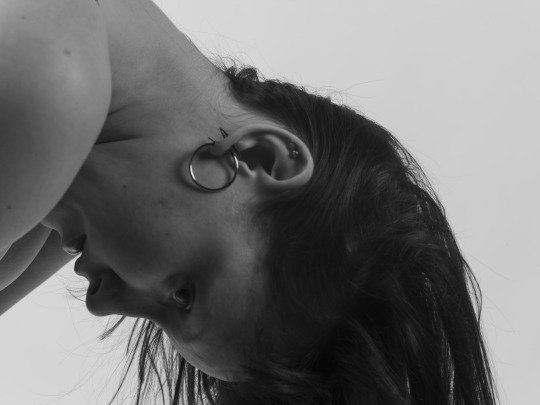
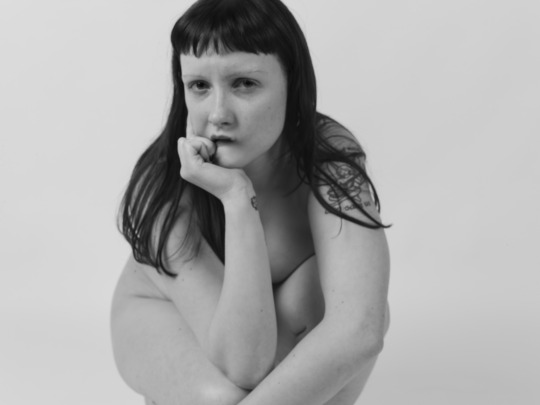
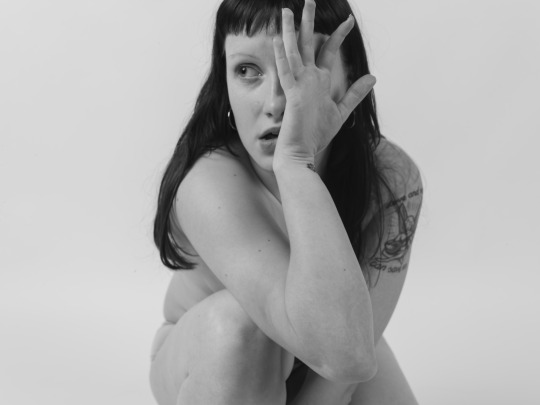
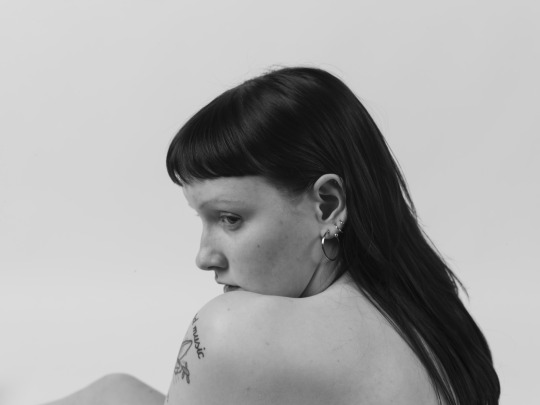
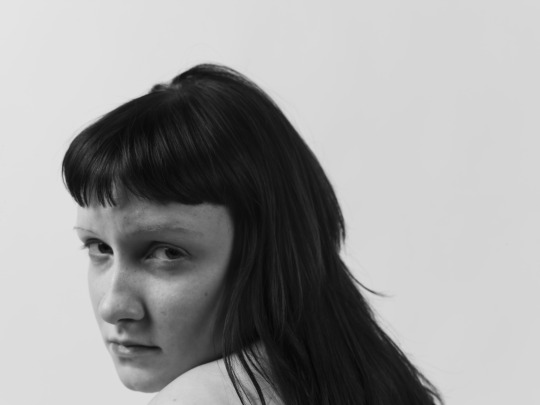
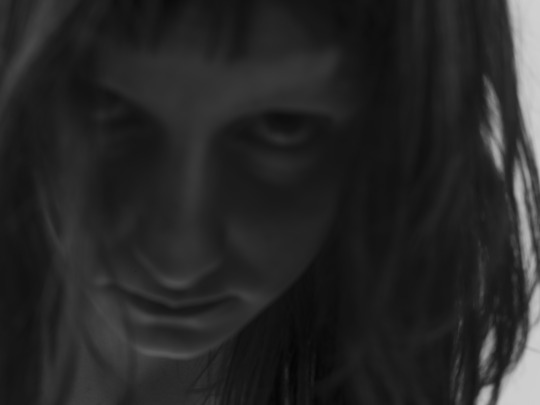
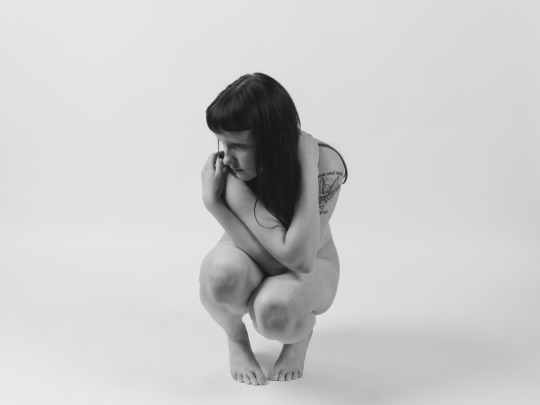
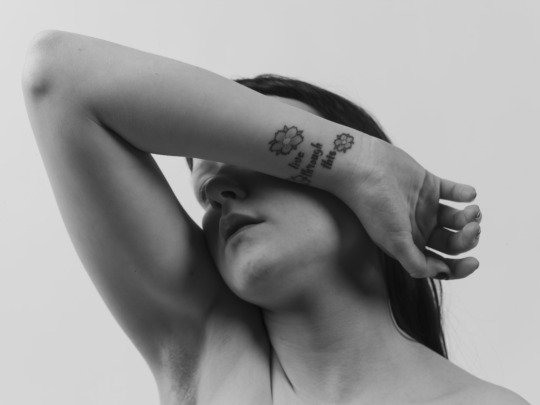
First shoot for the Major Project
Last week I finally managed to get a studio to shoot my project. I have decided to push myself out of my comfort zone quite drastically. I set out to create very vulnerable portraits of myself, and I couldn’t think of a more vulnerable situation than wearing no clothing. The shame of being naked and identity share some similarities, in my opinion, as they are both imposed on us. We are not born with the urge to cover ourselves as we are not born feeling superior or inferior to others due to the place we come from - we are taught that. During the shoot, I reimagined in my head the events and listened to music which have shaped my identity. It was honestly an emotionally intense time, and I am amazed by the way I was able to express those feelings through my body language. The pictures appeared black and white in my head even before shooting, so I edited them this way straightaway. The grayscale makes them more focused and compelling. At first, it almost felt difficult to edit them and showing them to someone felt really strange, but I think I am getting used to that.
1 note
·
View note
Photo
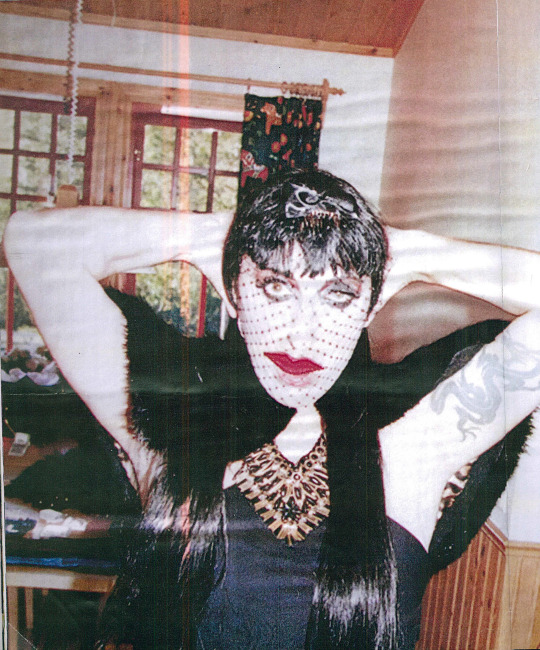
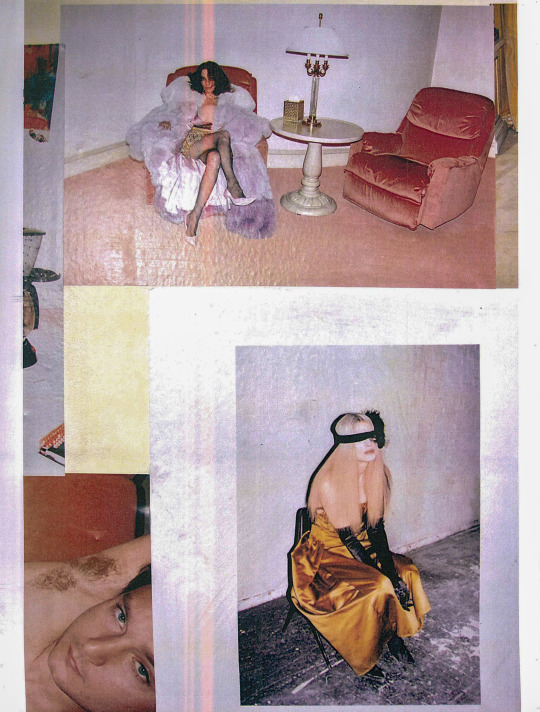
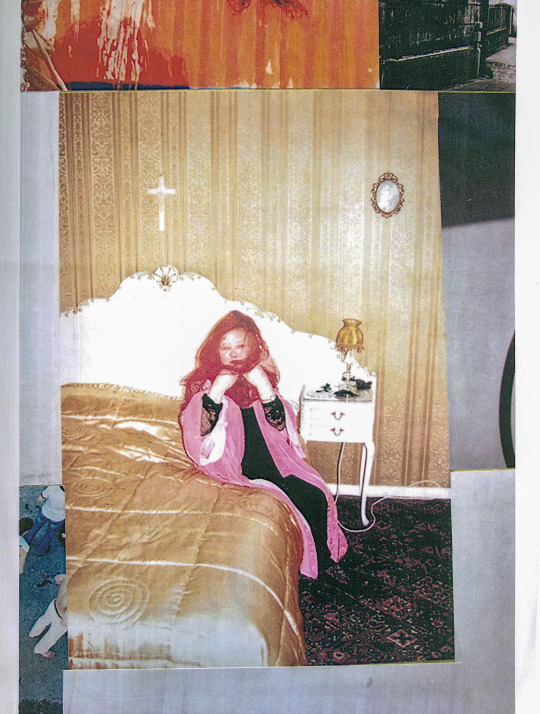
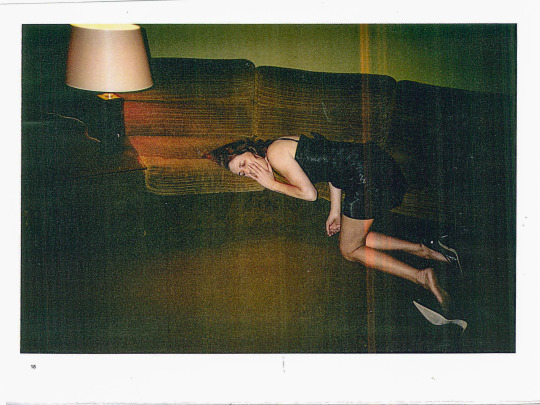
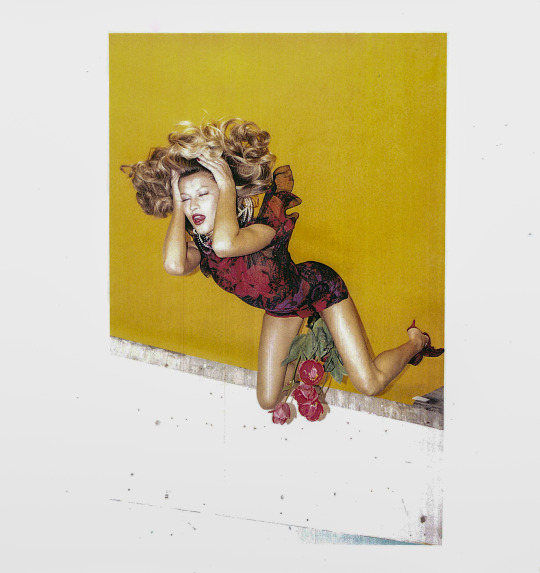
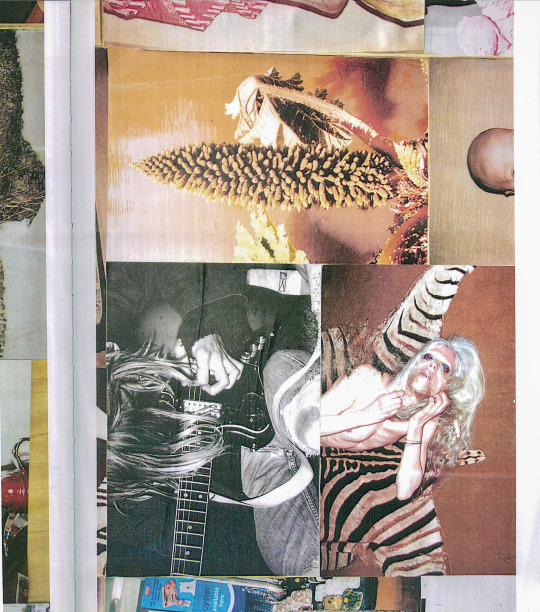
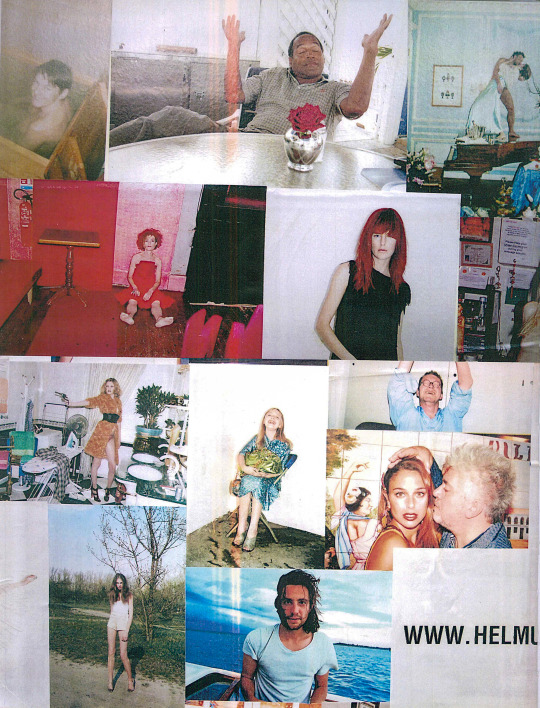
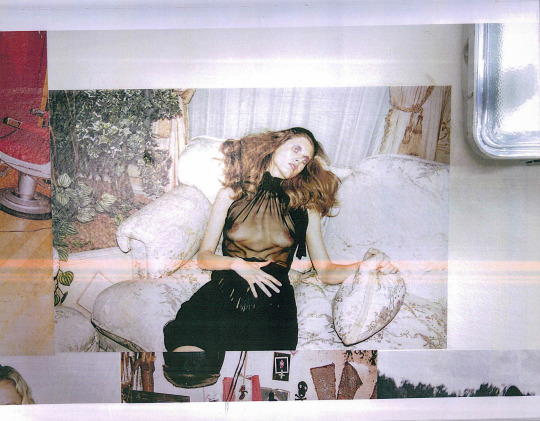
Juergen Teller has been a photographer I admire since quite some time. I looked at his books this afternoon, to examine the way he photographs his subjects, before my shoot tomorrow.
I appreciate a lot how down to earth his fashion photography is. I am really tired of all the beauty standards and fake perfectionism of that industry. His photographs are relatable and playful. At times, his subjects look uncomfortable and vulnerable, but contrasting to Corrine Day’s ‘Diary’, which I have looked at today, these models are consciously acting in front of the camera. In spite of the photographs having a rather simplistic, everyday aesthetic, Teller’s style is easily recognisable in them. I admire a lot how comfortable the subjects in his pictures are. I know from my experience that people are not willing to act ‘strange’ in front of the camera. I believe it is down to the general obsession of our society to be ‘normal’, fit in and not stand out too much from the rest.
2 notes
·
View notes
Text
Corinne Day - ‘Diary’
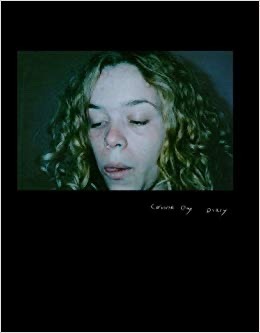
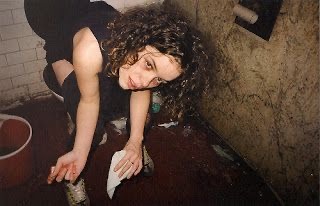
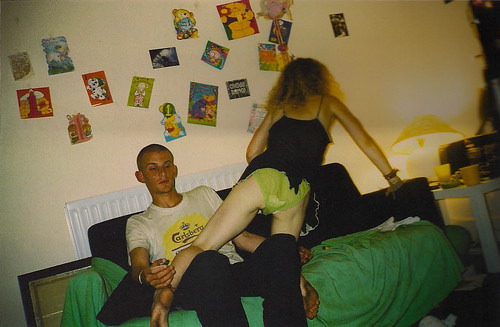
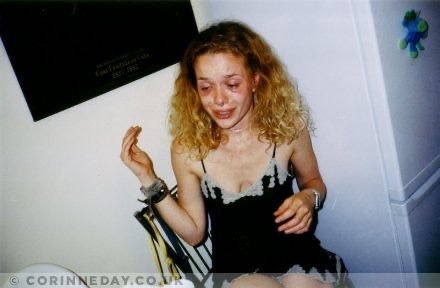
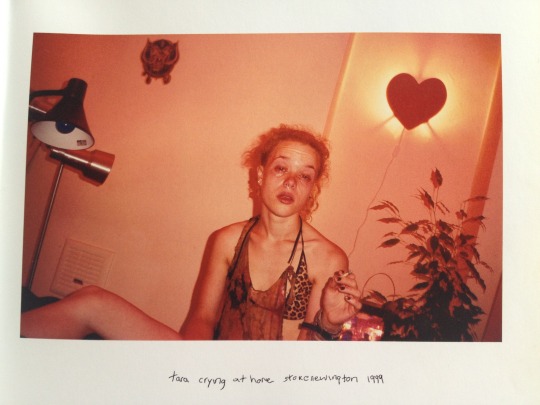
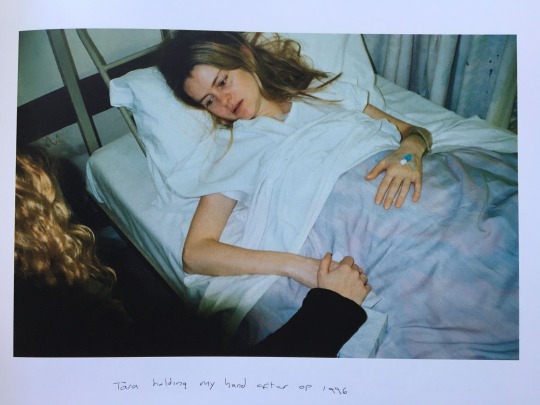
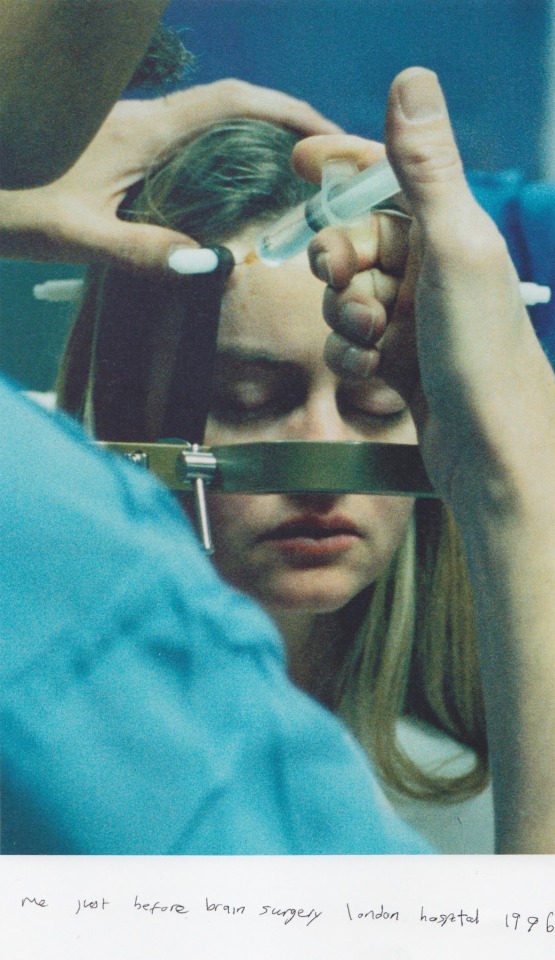
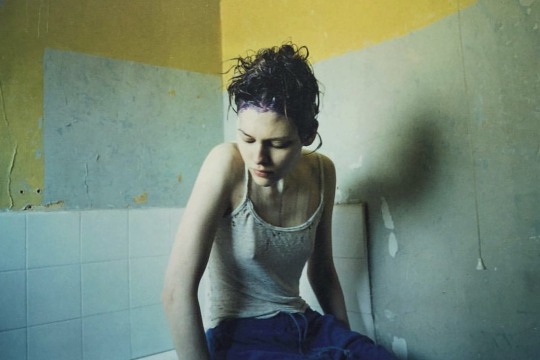
Today, at the Professional Futures class, we were visited by Molly Macindoe. At some point, she mentioned how outraged she was with a book titled ‘Diary’ by Corinne Day. She said she knows people included in the book and behind the scenes facts, such as Day buying the drug for her subjects, so she can photograph them without them being aware of it. I decided to look at the book in the library, as I really liked Day’s fashion photographs earlier and I was quite surprised by the story.
I do find the book uncomfortable. Although I enjoy sincere and realistic photography and often go for the ‘gut response’ in my own work, I feel Corinne Day went too far. I cannot see any reason why such photographs could be in any way beneficial. While I don’t mind photos of someone dying their hair or documentation of Day’s hospitalisation, those showing her friends taking drugs and in very intimate moments, such as having sex or sitting on the toilet feel very wrong to me, especially that it is very probable they did not realise they were being photographed. I am also astonished how much this book is worth and how many positive comments about it I have seen. For me, this is just another case of a photographer taking advantage of their subjects. I do not see anything wrong in showing vulnerability, but for me, it has to be owned by the subject.
This book leaves me in two minds about Corinne Day’s work, but I cannot help to still like her work with bands and fashion. It assured me though what kind of vulnerability I would never want to show.
0 notes
Text
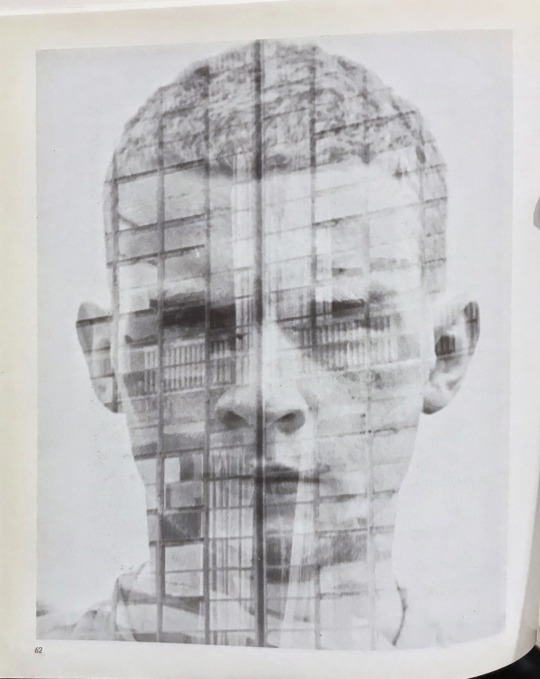
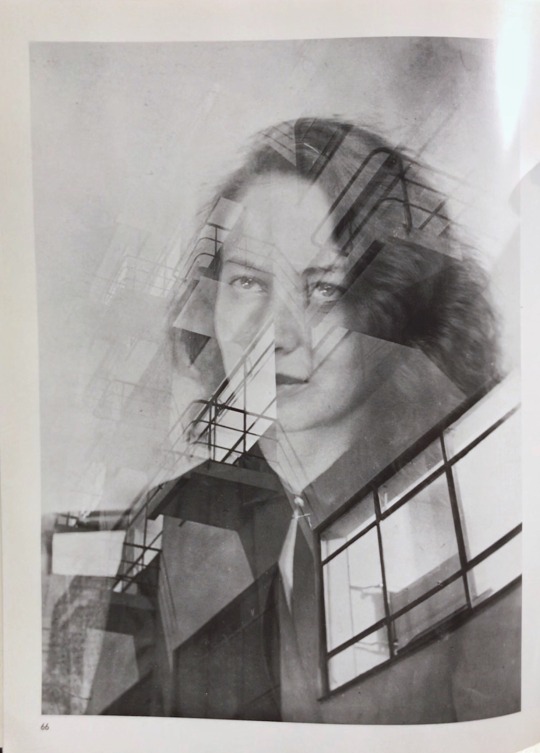
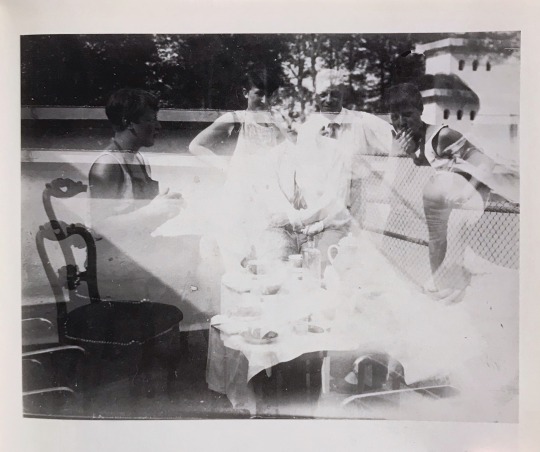
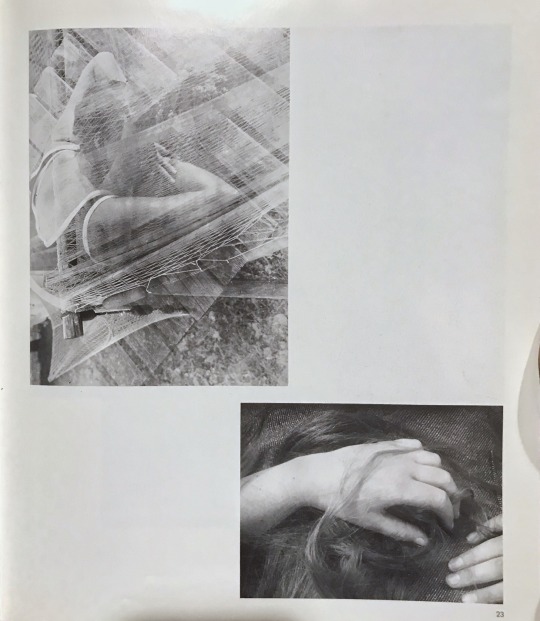
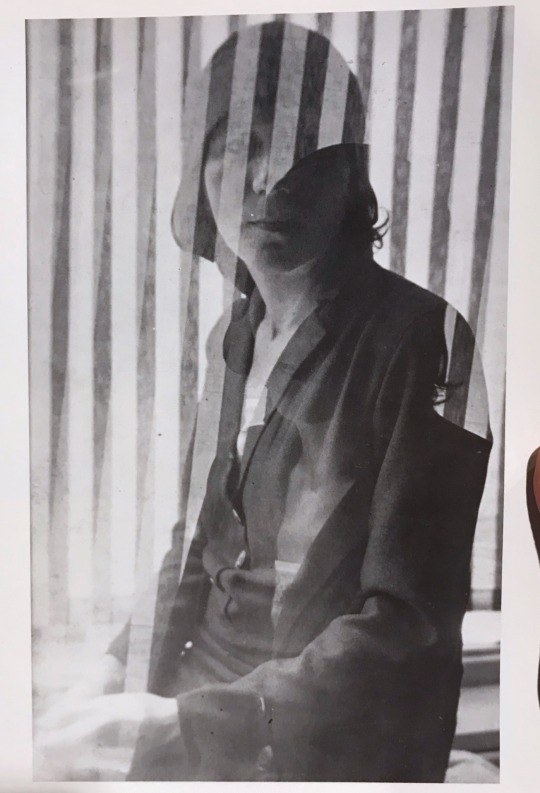
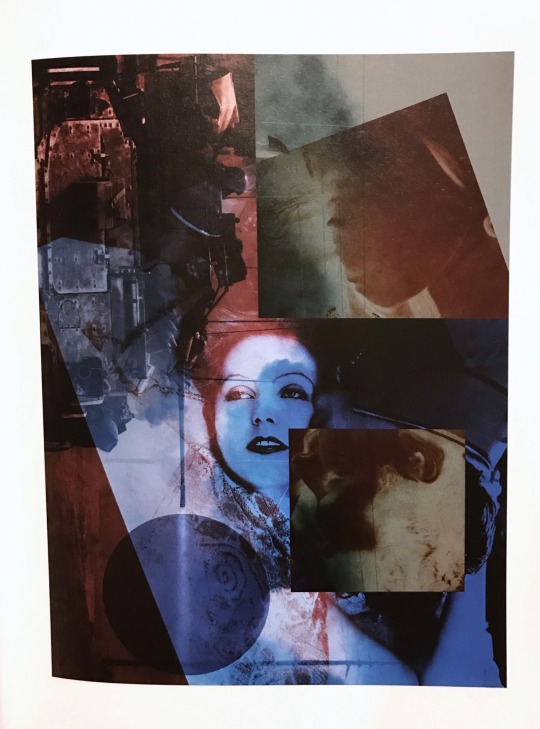
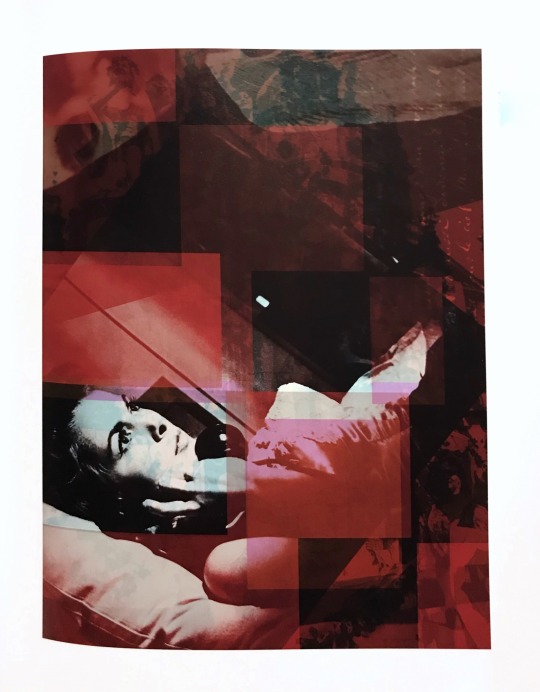
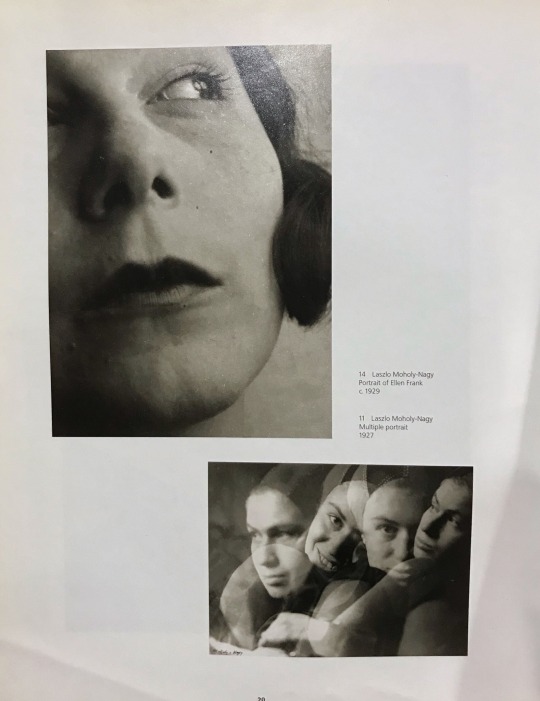
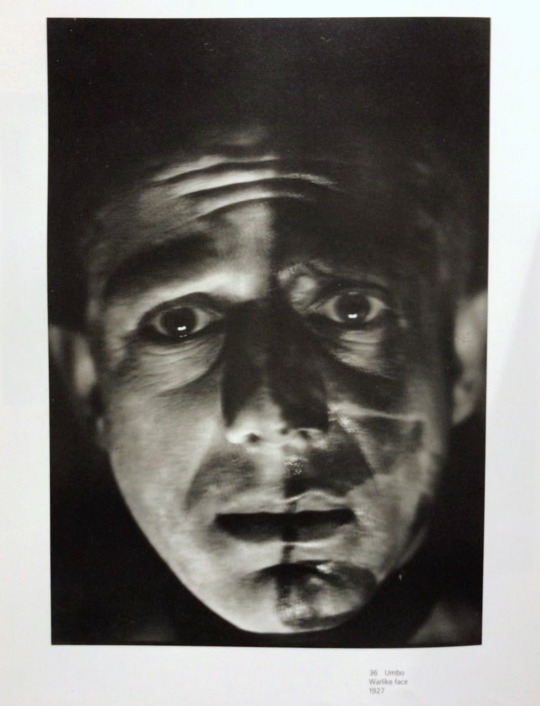
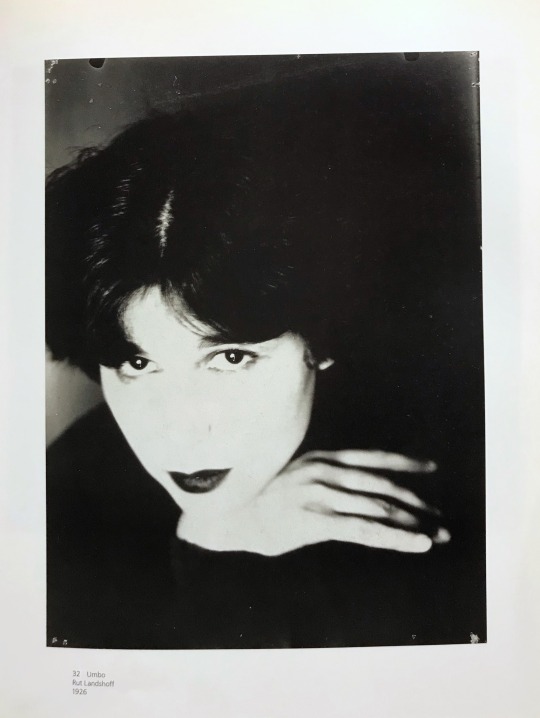
Inspired by the talk about Bauhaus, I began to look at photographs created by its members.
The portraits taken by the Bauhaus artists are very clean. There are not many other elements in the photograph other than the sitter and their attire. I did not come across any portraits with the subject smiling. Smiling in front of the camera is an almost involuntary habit of the majority of the population. Lack of that in the photograph hints for me that these are not snapshots, rather thought through images. Instead of smiling, the models show all kinds of other emotions or a complete lack of them. Some could say they are boring, but I enjoy their simplicity and subtle invitation to contemplate them, without being bombarded with a thousand different distracting elements.
Double exposure and collage were practised at the Bauhaus school quite widely. Often, the artists would juxtapose portraiture with images of form - architecture or material. Such extraordinary composition springs to mind questions about art, humanity, machinery. It brings a new dimension to this work, makes it appear 3D and tactile. This technique obscures reality while challenging the viewer to look deeper for the meaning.
1 note
·
View note
Text
Talk: The Perversions of the Bauhaus
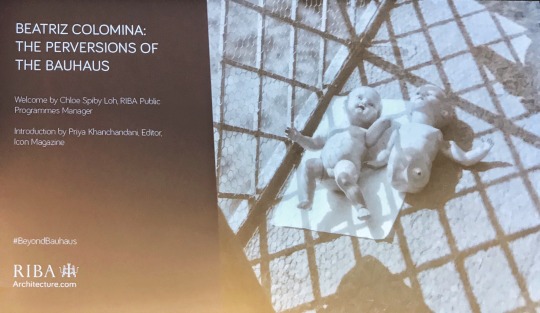
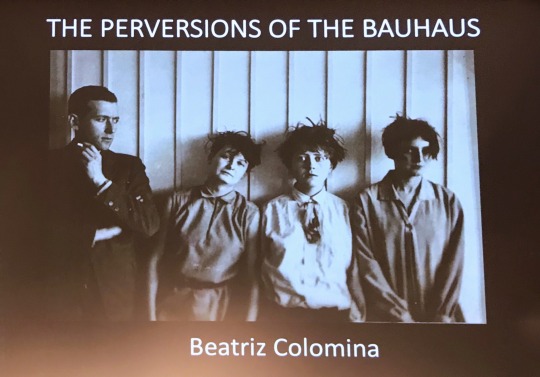
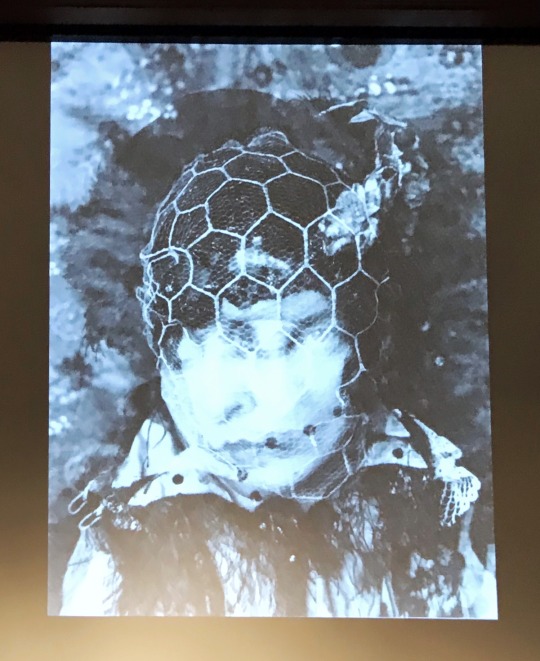
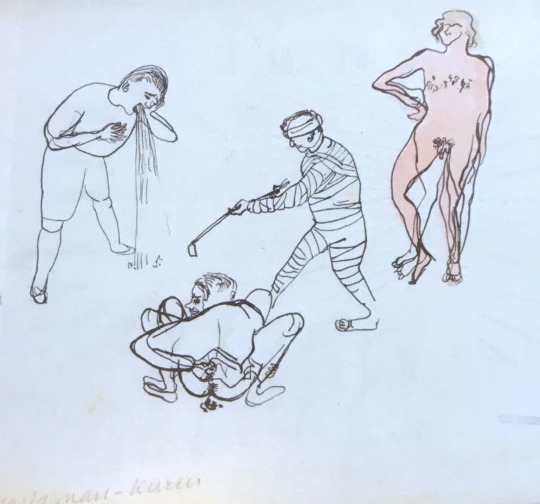
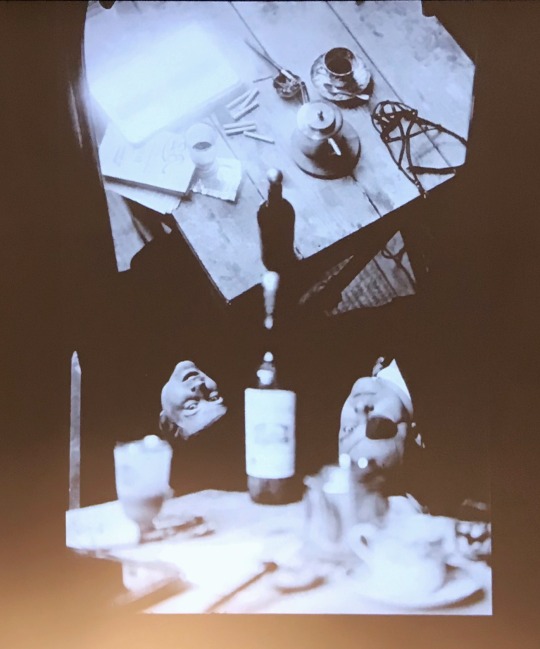
The Royal Institute of British Architects has currently on display an exhibition celebrating Bauhaus on the centenary of its establishment. I attended a talk entitled ‘The perversions of the Bauhaus’ by an architecture historian Beatriz Colomina. Interestingly, she did not talk much about architecture itself, rather about customs and other activities of members of Bauhaus. Unfortunately, I didn’t manage to take many pictures of the photographs the presenter was showing, as she was changing them too quickly. Nevertheless, it made me aware that Bauhaus members were involved in photographic arts as well and their experiments in that field. The talk focused on the ‘perversions’ of the art school, although the presenter frequently underlined that she doesn’t mean it in a negative way. For her ‘perversions’ are diversions from the norm. Indeed, the Bauhaus teachers were encouraging thinking outside of the box and introducing innovations to art and life as well. Though those ideas might sound weird now, they did contribute to the world of art significantly. It is incredible to think those people were having such discussions and creating such work a century ago, and it is still deemed as bizarre.
1 note
·
View note
Text
‘Feast for the Eyes – The Story of Food in Photography’ at The Photographers’ Gallery
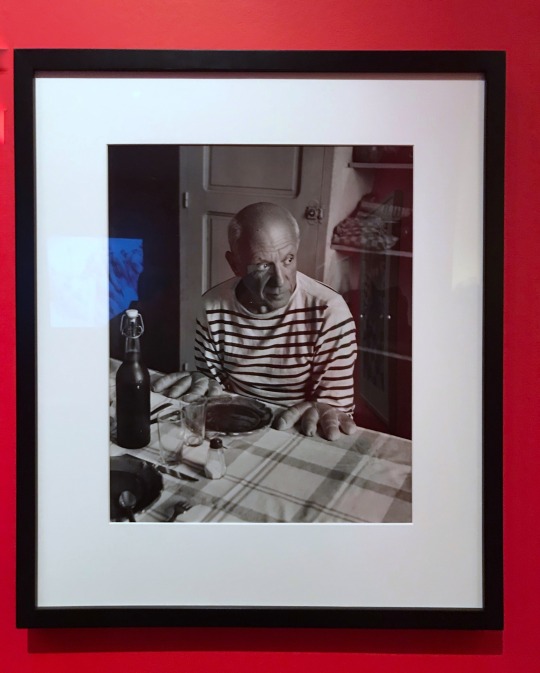
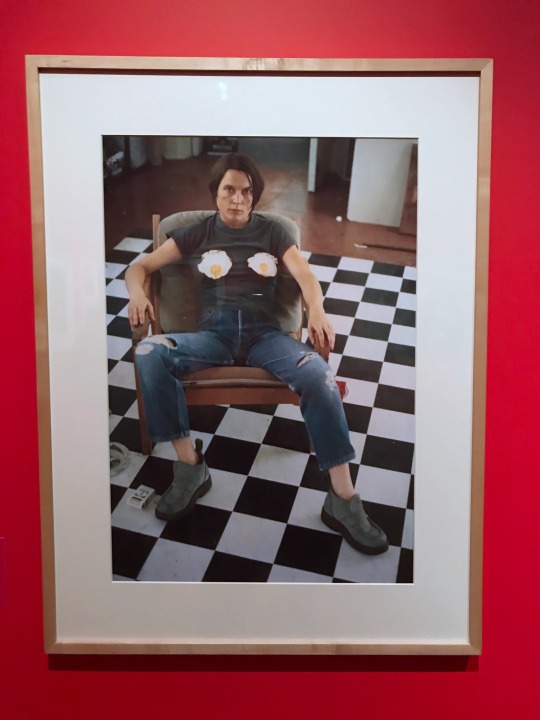
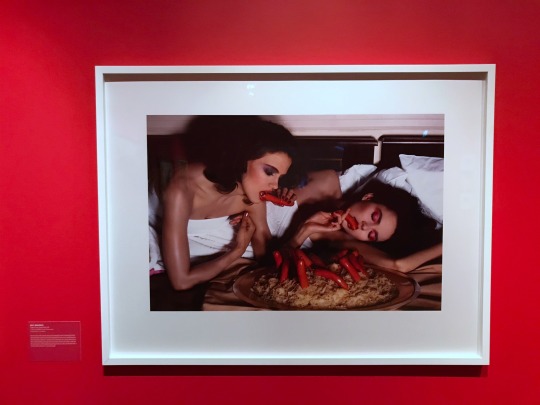
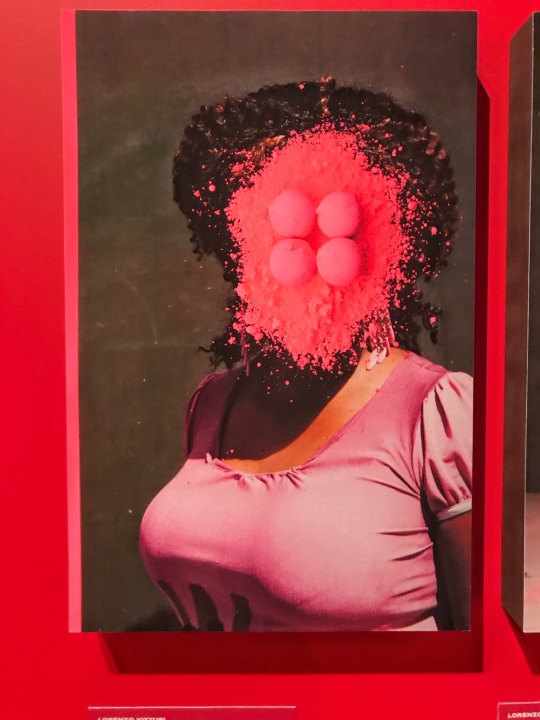
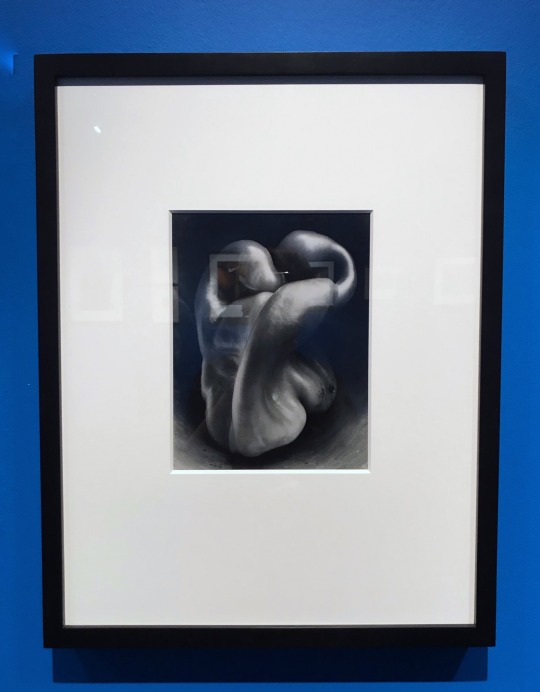
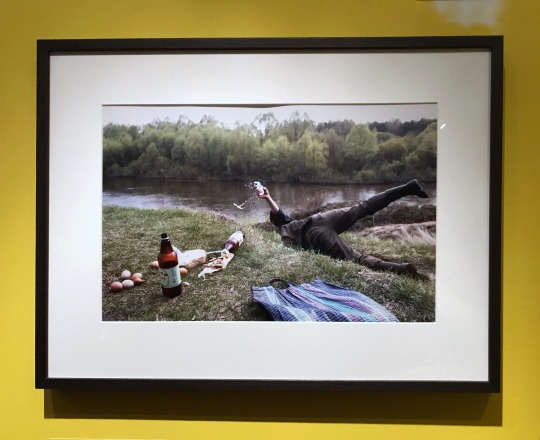
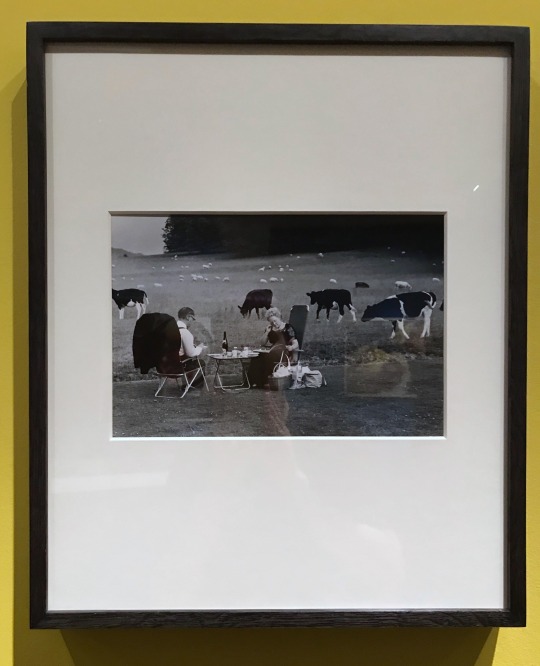
I did not enjoy the second exhibition I have seen at The Photographers’ Gallery as much as the first one. This exhibition focuses on food, and although I think it was very well-curated, I only liked a few pieces. This might be down to my aversion to cooking (one entire section was devoted to cookbooks) and not finding food an interesting subject art-wise. ‘Playing with Food’ was one section that I moderately enjoyed, because it included different kinds of portraits. Most of them were made with a comic intention, and it made it harder for me to relate to them, as I don’t usually create/look at this kind of photography. The only photograph without people that I included in my selection is Edward Weston’s ‘Pepper No. 30′. The shadow and light play in this still life are magnificent, and the pepper’s shape does remind me of a human figure in a way. In the last two photographs, I enjoy the contrast and farce of the outdoor dining ritual. I do enjoy documentary photography that captures life in a way that makes one stop and contemplate the situation.
0 notes
Text
‘Shot in Soho’ at The Photographers’ Gallery
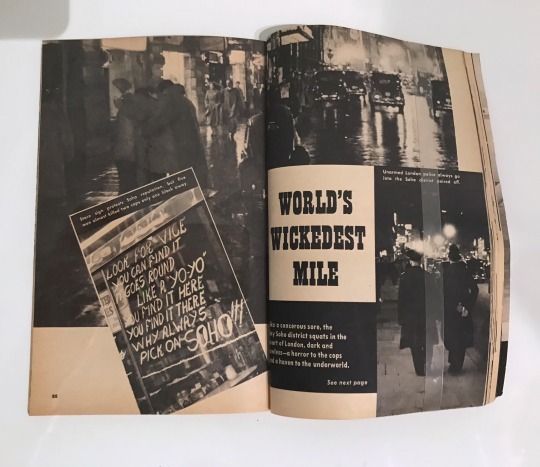
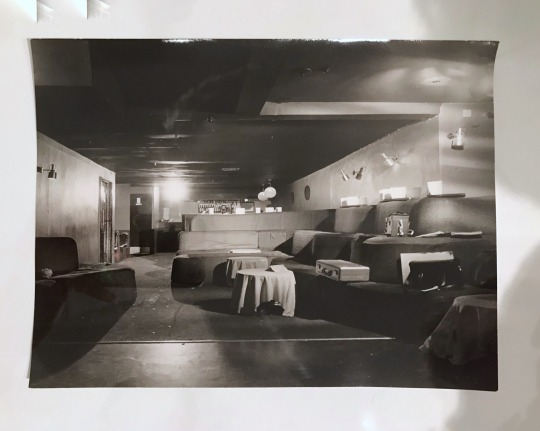
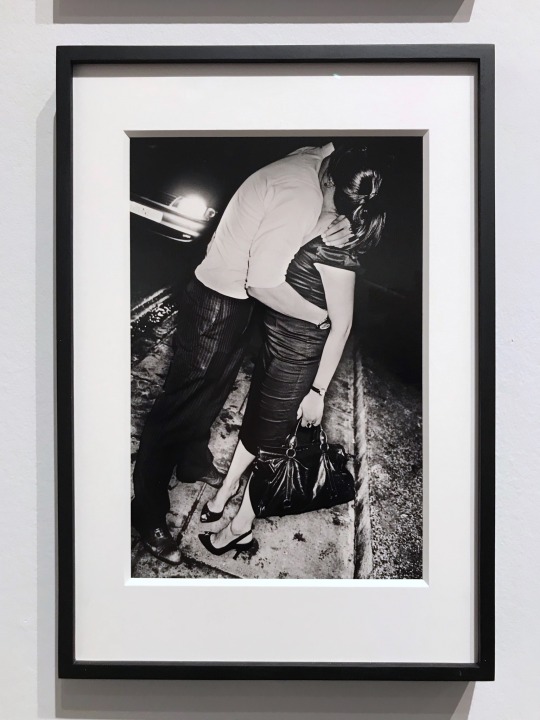
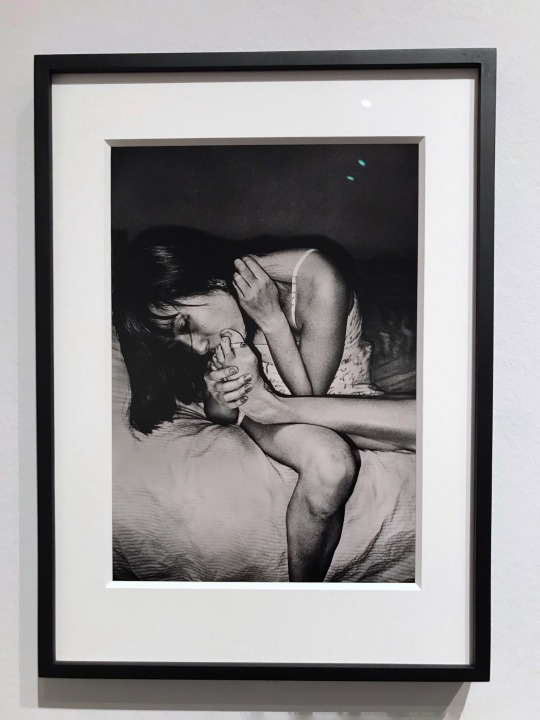
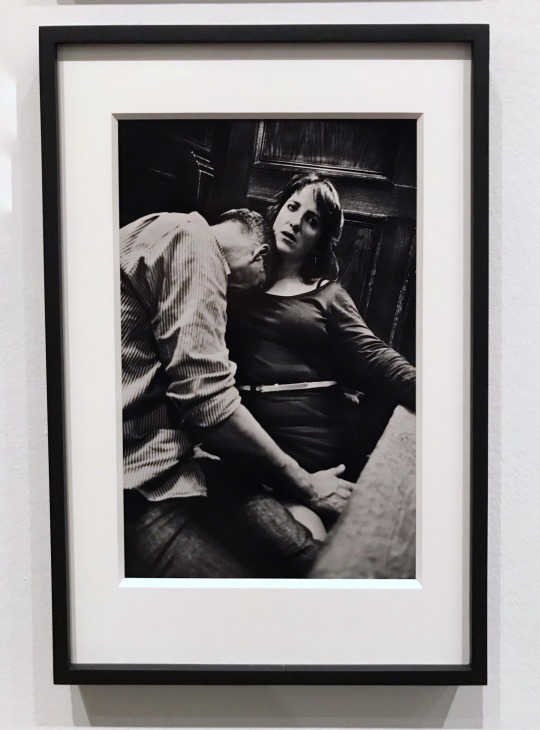
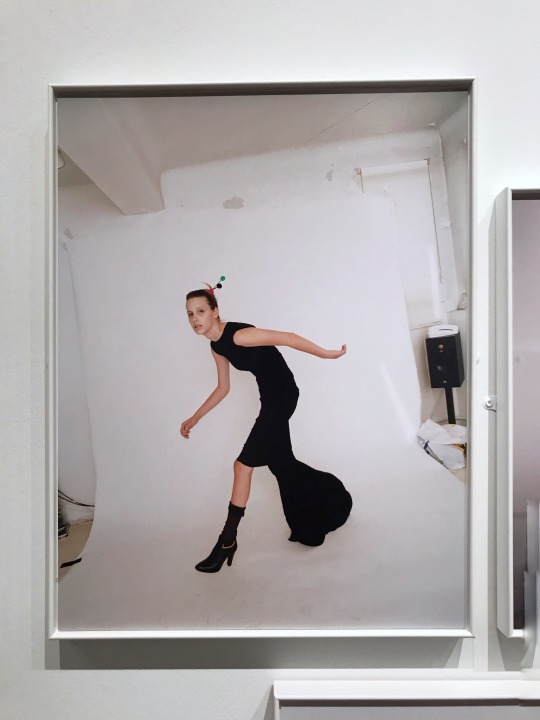
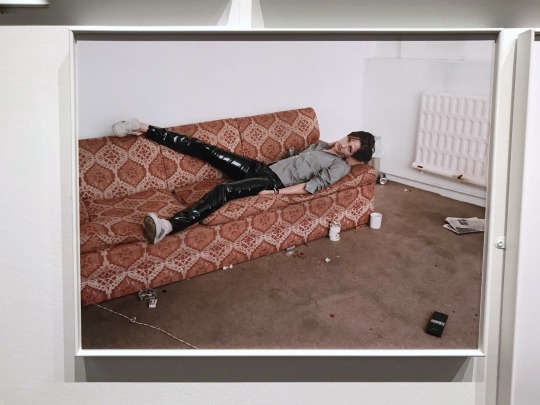
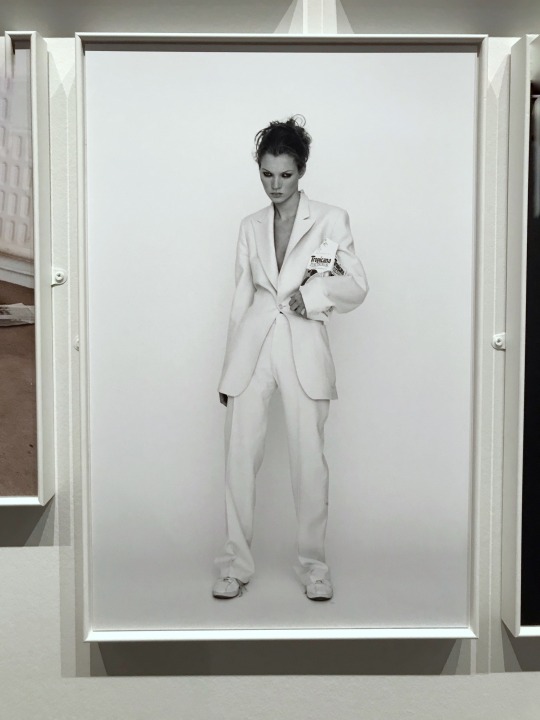
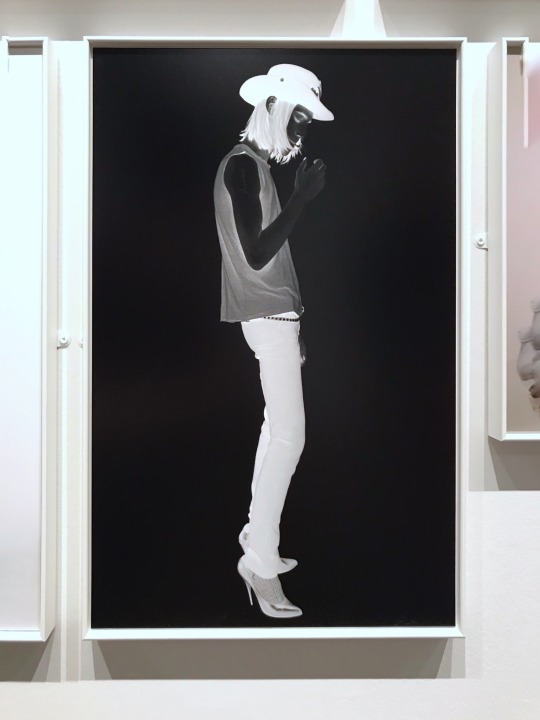
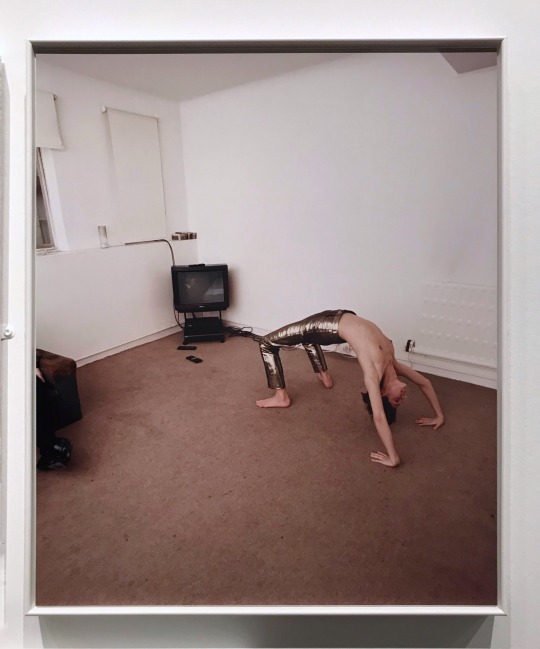
This week, I visited the new exhibitions at The Photographers’ Gallery. I really enjoyed the ‘Shot in Soho’ show. It includes a range of photographs from as far back as the 1950s’ as well as projects commissioned lately. The curators sourced photographs beyond documentary/street genre, what I really enjoyed. The archival spreads from old magazines and historic photographs offered a valuable insight into life in Soho back in the day, as well as, into ancient graphic design. In this show, there were two bodies of work that I admired the most. First one is entitled just ‘Soho’ and shot by Anders Petersen in 2011. I was really impressed with how close he manages to get to his subjects. The aesthetic of his prints - very highly contrasted with rich blacks, also appeals to me a lot. The second project, which is actually my favourite from all the shows at TPG at the moment, entitled ‘The Brewer Street Work’ by Corinne Day, is a body of work grouped because of the place they were taken at. I am very impressed with the way her fashion photography feels very realistic and documentary. In my work, I focus on challenging the norms, and I felt really inspired by these photographs.
0 notes
Text
Talk: Women photographers’ perspectives on mental wellbeing
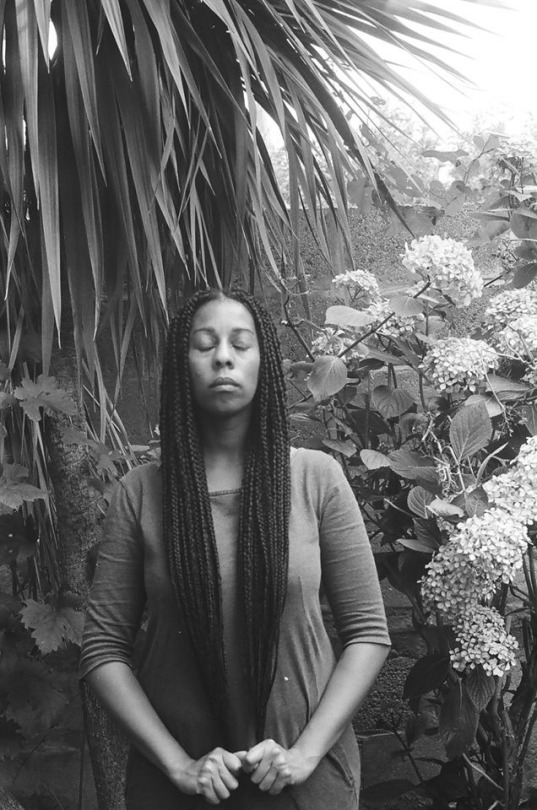

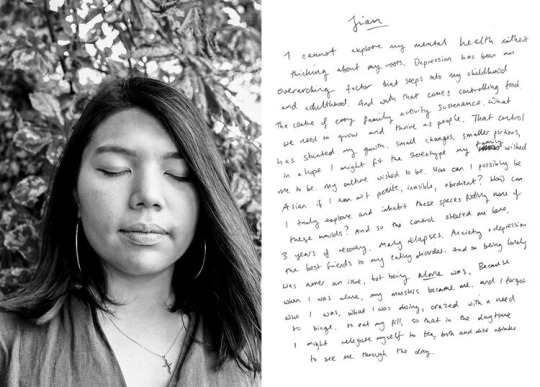
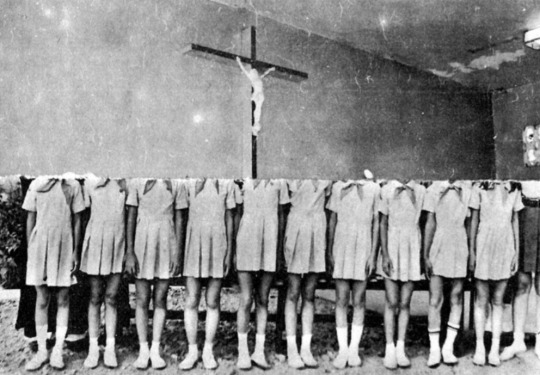
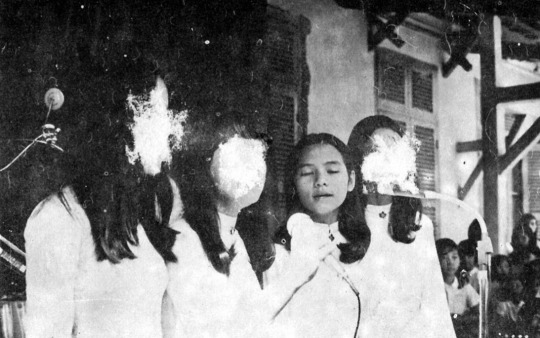
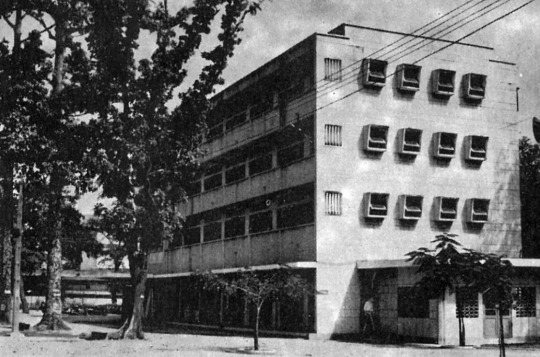
This week I attended a talk entitled ‘Women photographers’ perspectives on mental wellbeing’ organised by Photojournalism hub. I felt it would be useful to hear from artists working around mental health, as this is a topic I attempted myself, but found it difficult to share/explain my work to the audience.
I admired a lot a project called ‘Whispering for help’ by Marie Smith. It consists of portraits of women of colour paired with their own writing about their mental health. Poignantly, Marie started the project with herself. I find self-portraiture quite challenging, mostly of fear of being seen as vain, but also of being exposed. Mental health is a very personal issue; therefore, I was very impressed with the bravery of Marie and her sitters. It is important that the project is equally made both by the photographer and the participants, and they tell the stories themselves. I think it is a common issue in documentary photography/photojournalism that the photographer takes advantage of their subjects and solely profits from their project, so I am glad to see a project that doesn’t follow this unhealthy path.
The second project that stuck with me was ‘The malady of Suzanne’ by Nieves Mingueza. It is quite extraordinary, as it consists of photographs and documents the artist had found in her flat. From them, she found out that her home used to be a psychiatric hospital. The information about the person who left it behind was very limited; therefore, the artist has reinvented the narrative of the images. The only facts she discovered was that the documents were left by a woman who came from Asia, the name she adopted when she arrived in England, her profession and what mental health issues she suffered from. The artist invited the audience to look at the photographs closer at a table and note the emotions they evoke. I believe that was a very valuable tactile exercise. It made me consider how the identity of a person is not only shaped by themselves, but also by other people around.
0 notes
Text
‘The Most Powerful Woman in the Universe’ at Gallery 46
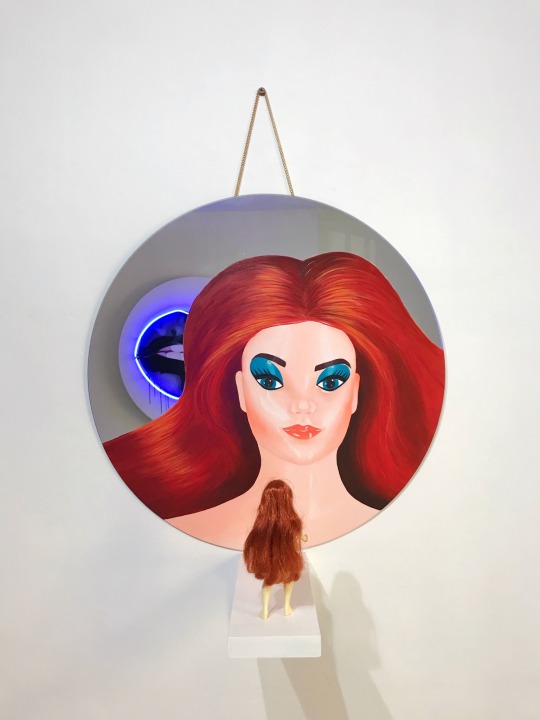
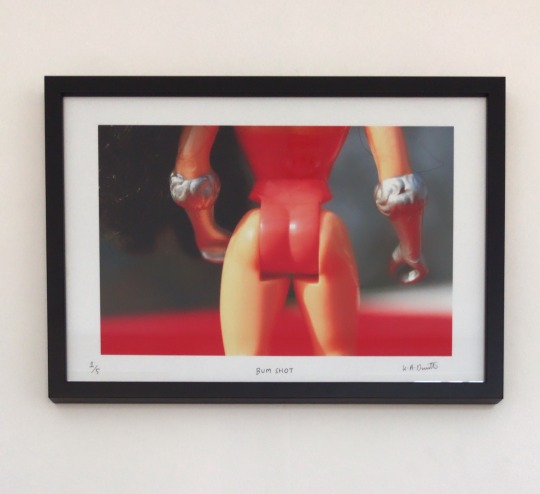
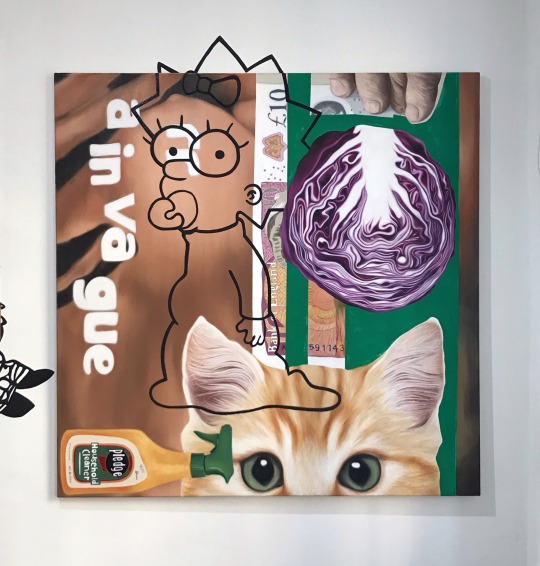
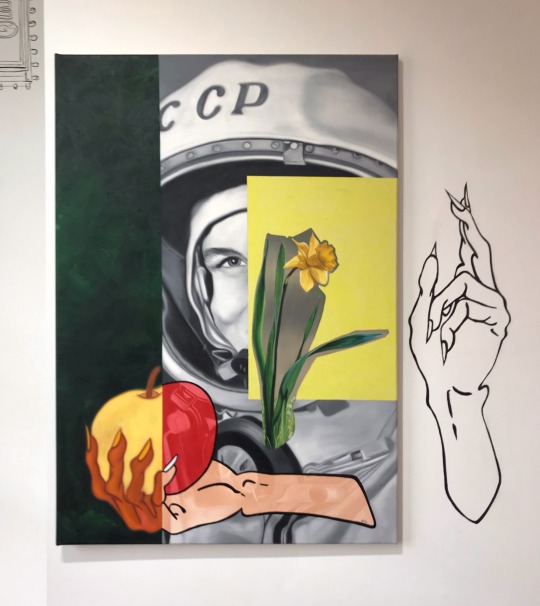
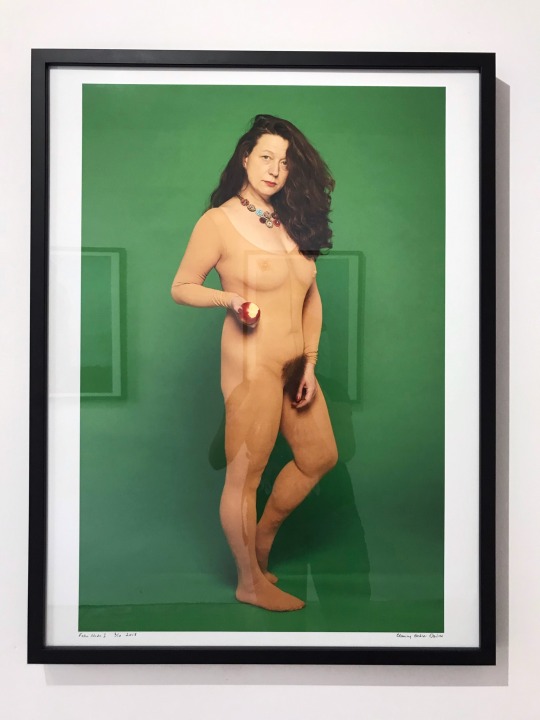
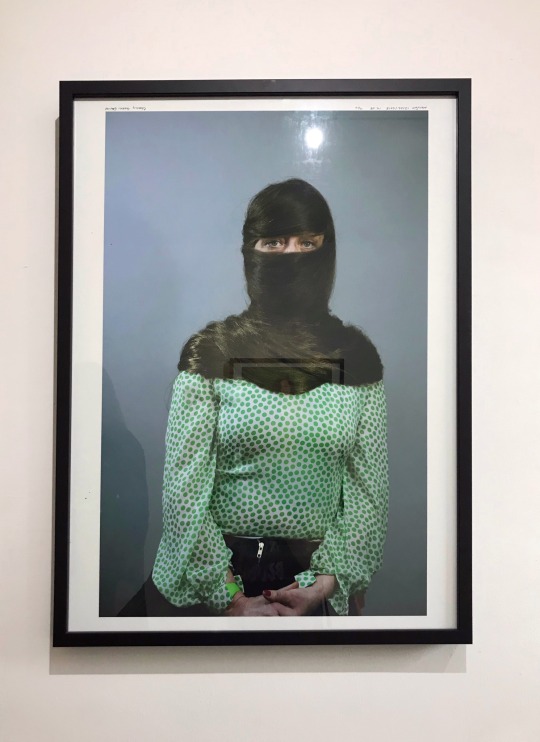
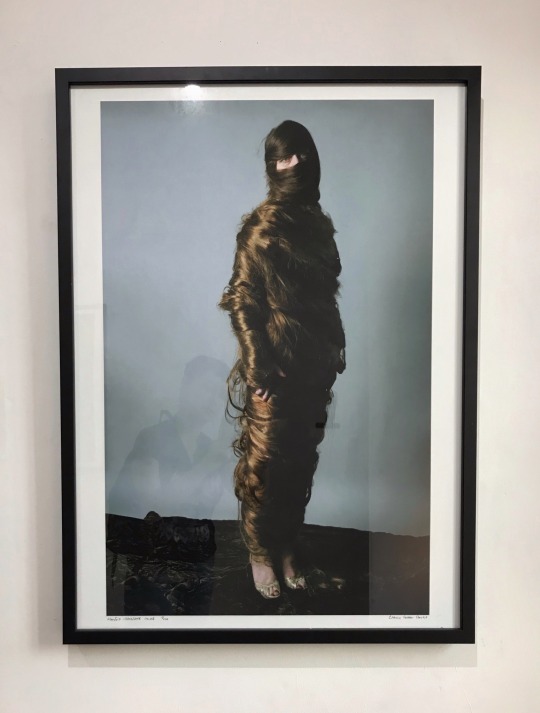
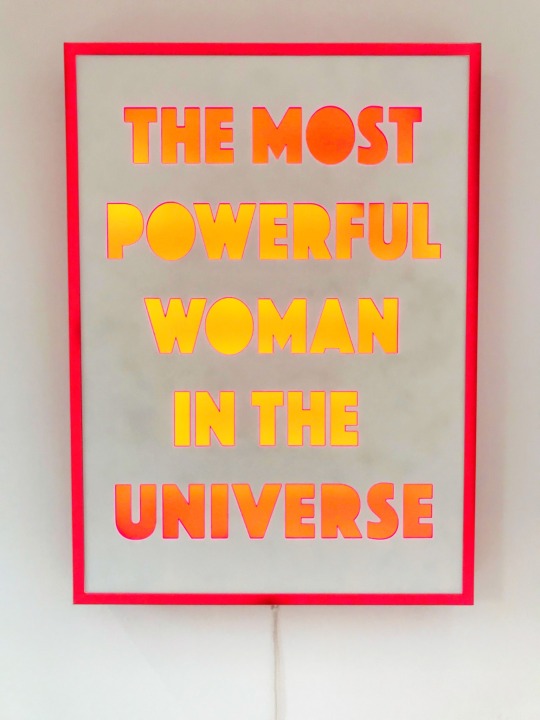
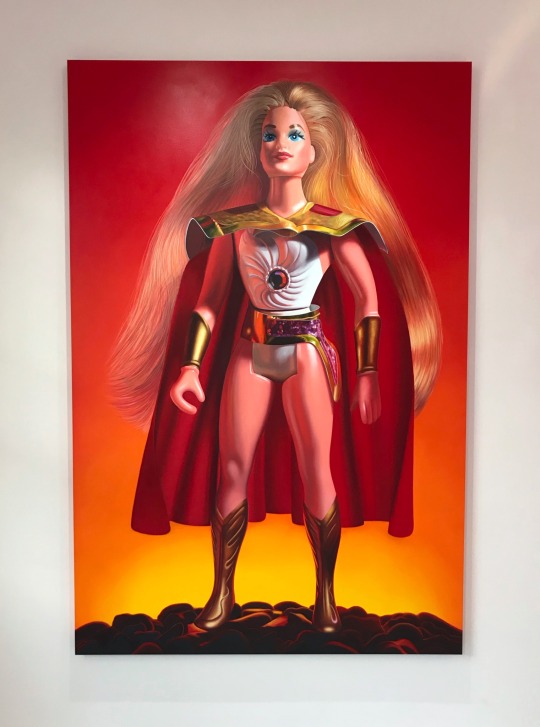
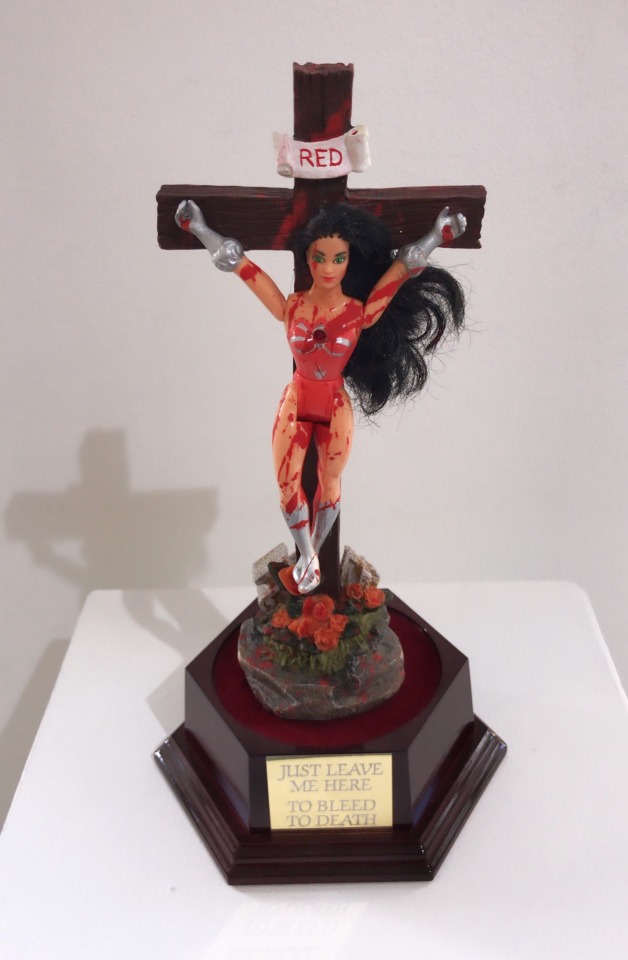
Last weekend, I visited an exhibition ‘The Most Powerful Woman in the Universe’ at Gallery 46. It was a mixed media group exhibition consisting of artwork created by women on the topic of womanhood. I was lucky enough to come on the afternoon of live performances of poetry and music.
The artwork presented was a real mixture, but it was all relating to the same topic. It exposed the stereotypes concerning women in a very witty and one could even say controversial way. I believe that is a positive quality although, as only through evoking strong emotions people’s minds can be changed. I was happy to see art being made to bring attention to such important matters.
0 notes
Text
Jo Spence - Misbehaving Bodies at Wellcome Collection
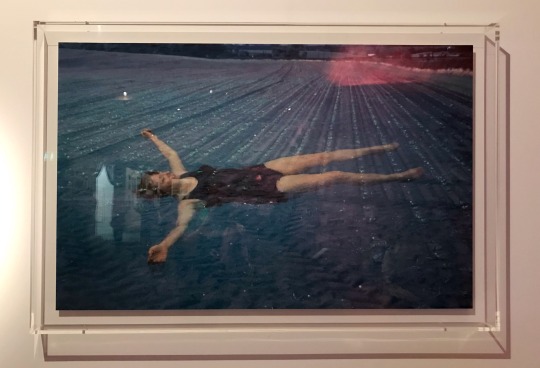
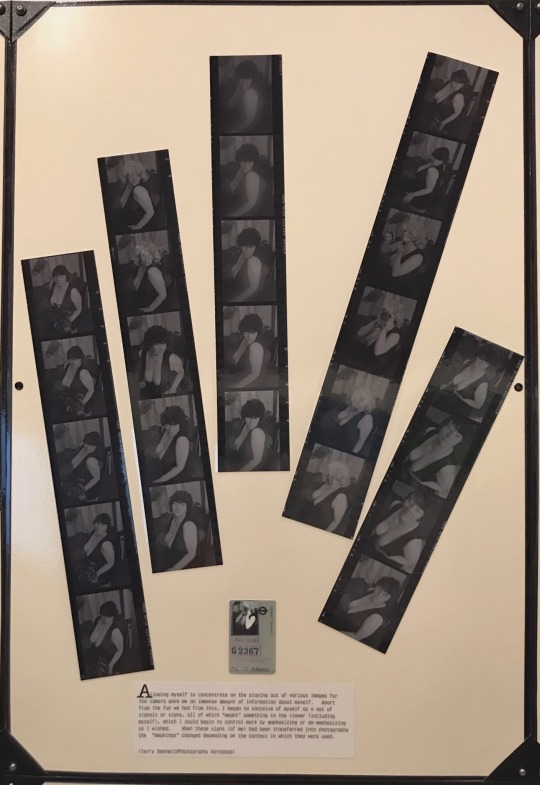
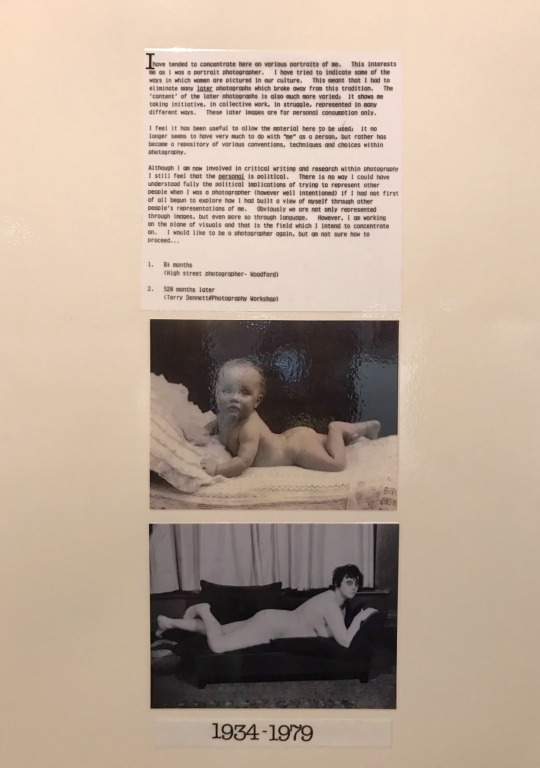
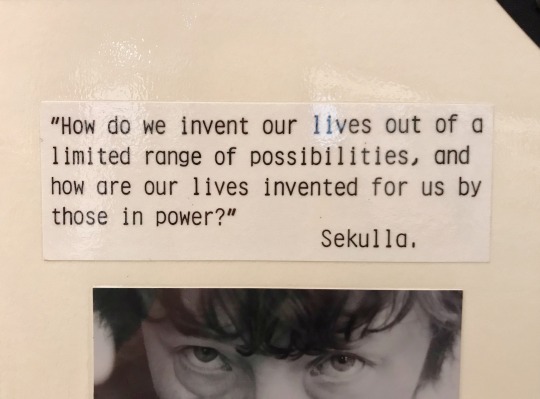
This week, I visited the Misbehaving Bodies exhibition at Wellcome Collection with a group of freshers I am looking after. It contained works by two artists, Oreet Ashery and Jo Spence. I got much more interested in Jo Spence’s work, and I spent a long time looking at it.
Jo Spence’s work is entirely about her and her life. She used photography as therapy. Most of the projects on display were collages of photographs and text. Thanks to that, it was very easy to follow the story of Spence’s life and understand what she wanted to say through her work. Her approach to photography was very simplistic - she documented herself and the world around her as it was. She was not scared of reality. The world in her photographs appears as it is, there is no post-production or retouch going on. I think the most important thing for me in Spence’s work, was her understanding how the society, culture, family etc. shape our lives, our thoughts, our choices. While in her projects looking at her past she is passive about it - she acknowledges the impact of the outside world on her journey, in projects documenting her fight with cancer and her last days, she is in total control of her life and her image. I am very impressed with the work of Jo Spence. She produced a body of work that uses photography in an entirely different way than it is used usually. Her photography is therapeutic, informing and speaking about important issues, such as health, body image, the notion of self and evanescence.
0 notes
Text
Talk: Thamesmead: The Town of Tomorrow
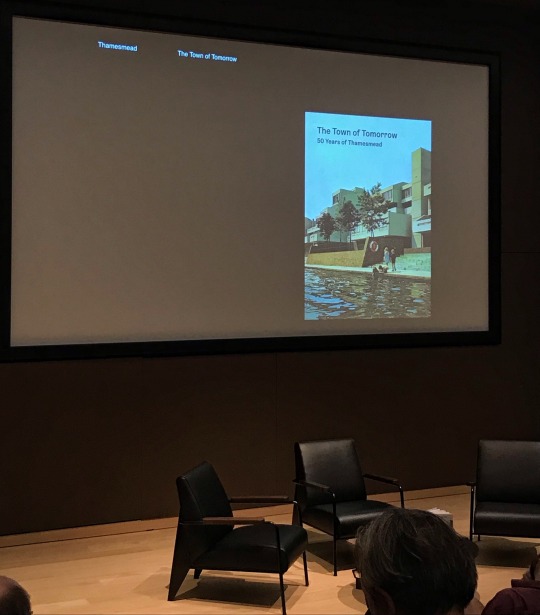
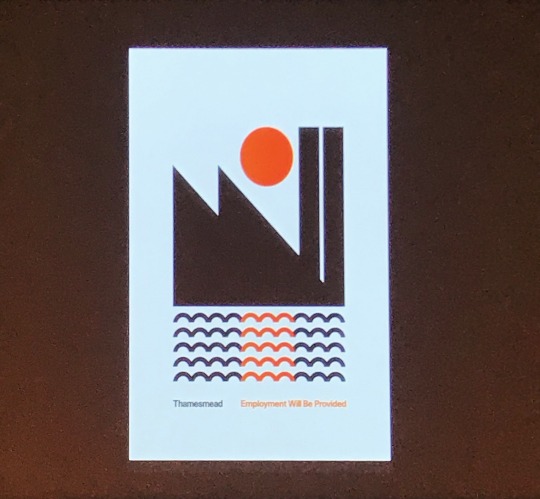
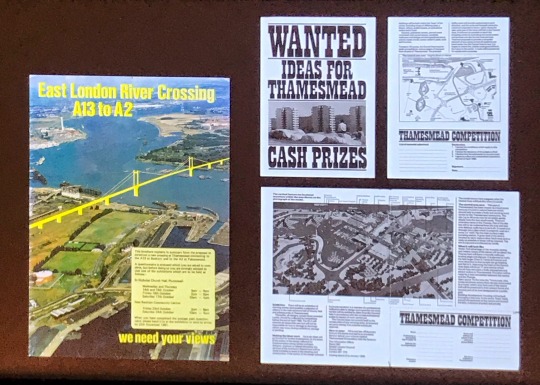






On 11th September I attended a talk entitled Thamesmead: The Town of Tomorrow at the Design Museum. It was a panel with the photographer, editor and publisher of the book 'The Town of Tomorrow - 50 Years of Thamesmead'. The book was created on the 50th anniversary of first residents arriving in the town. It contains both archival material and new work shot by Tara Darby. I find it really interesting that the authors focused not only on the architecture of the town but also on the stories and lives of people living there. The book seems to show a complete history of Thamesmead, from the idyllic planning and London authorities’ advertising campaign to the harsh reality of living there and design failures.
The authors spoke about the process of creating the book, their fascination with Thamesmead, but also the responsibility that such a project carries. I admire the way Tara Darby is able to work with people. She has spoken with each of her portrait subjects and conducted full-length interviews with some of them. The book is not only aesthetically pleasing but also provides a lot of knowledge about Thamesmead. I believe that sets it apart from a typical coffee table book.
0 notes












